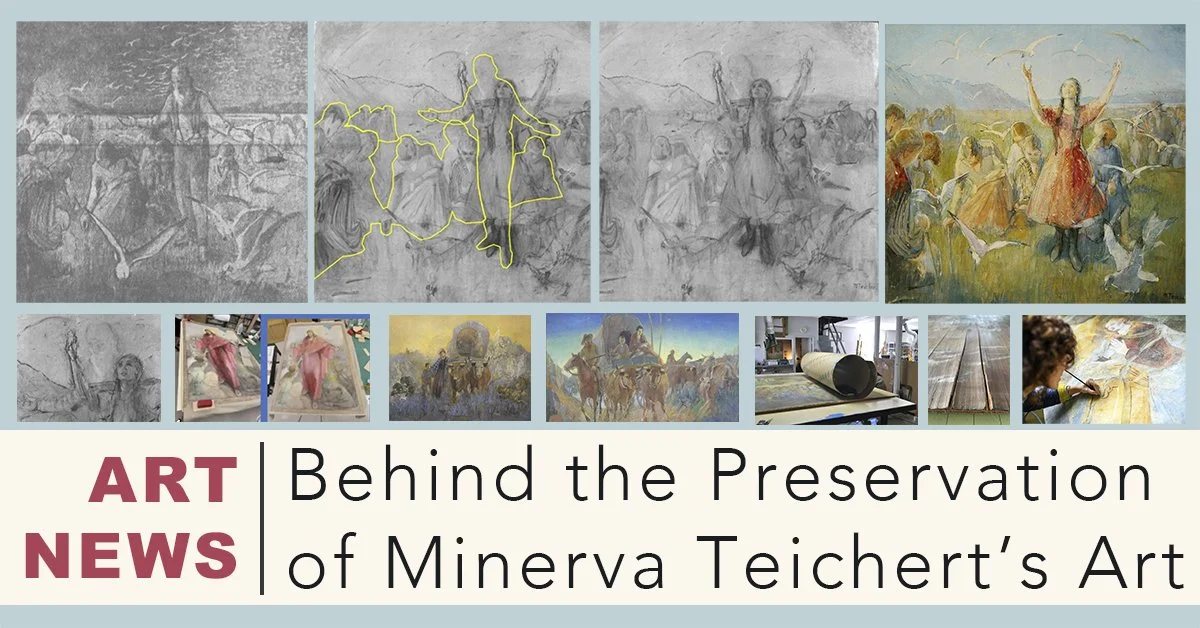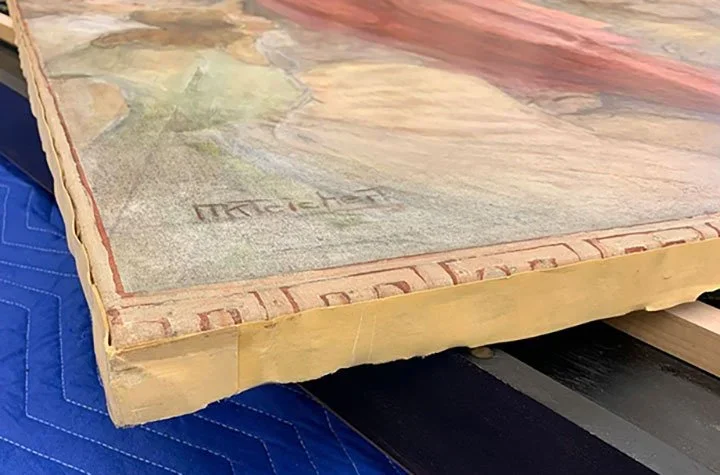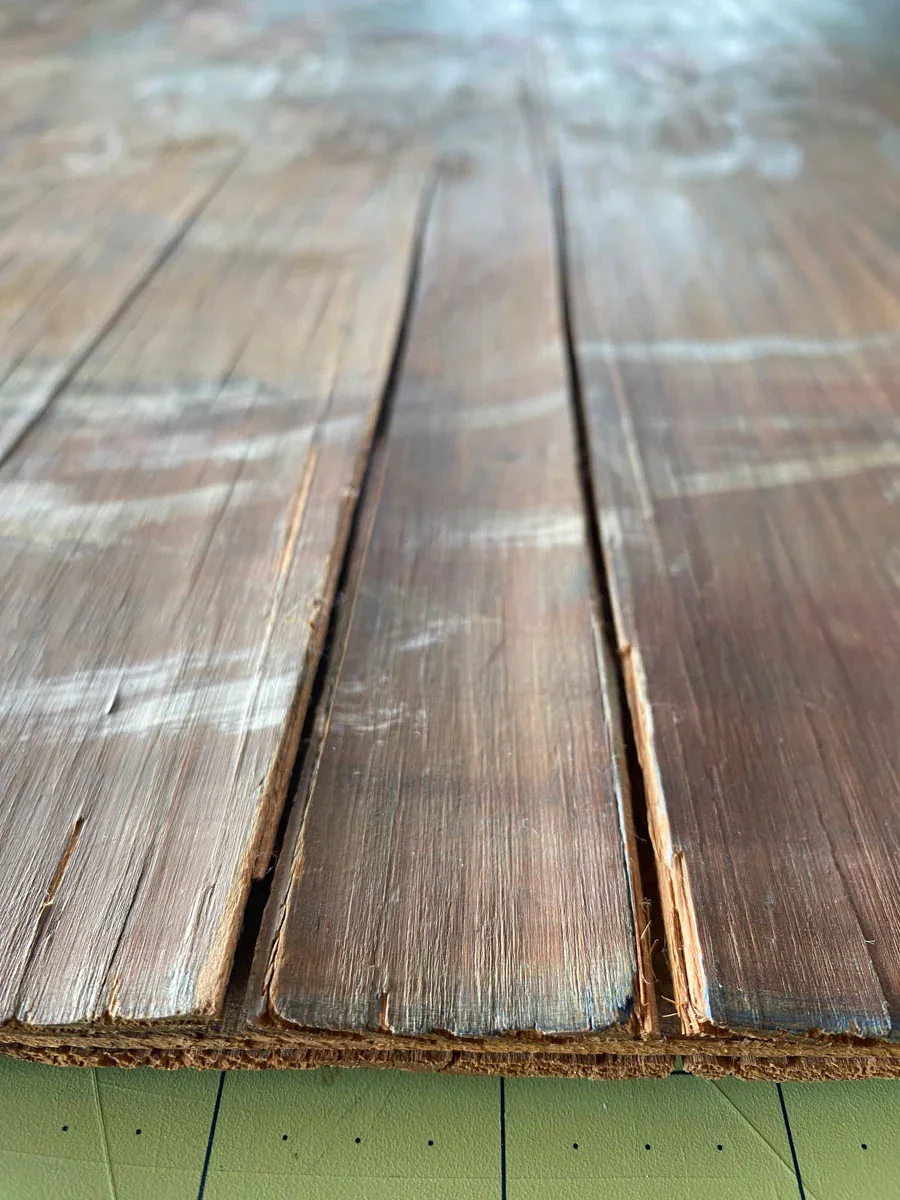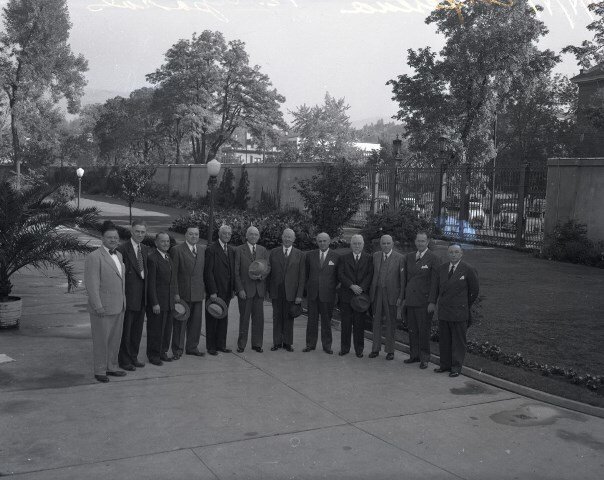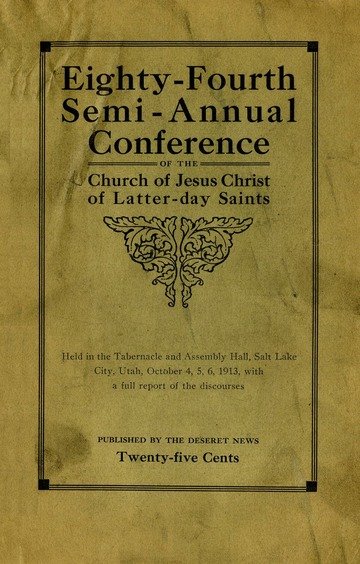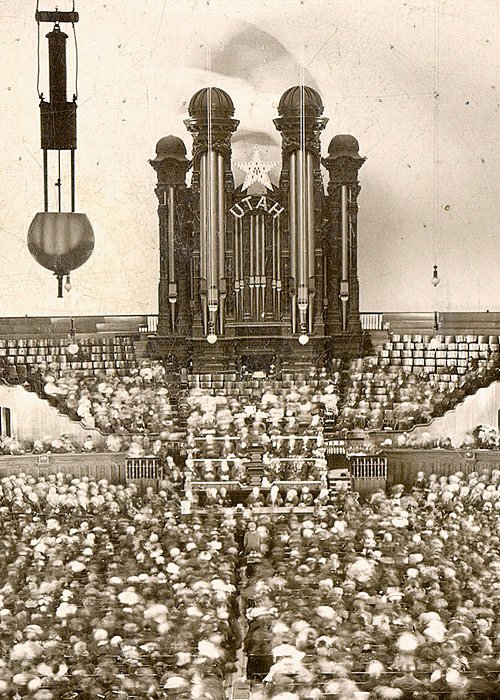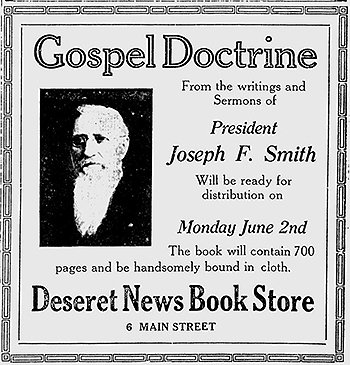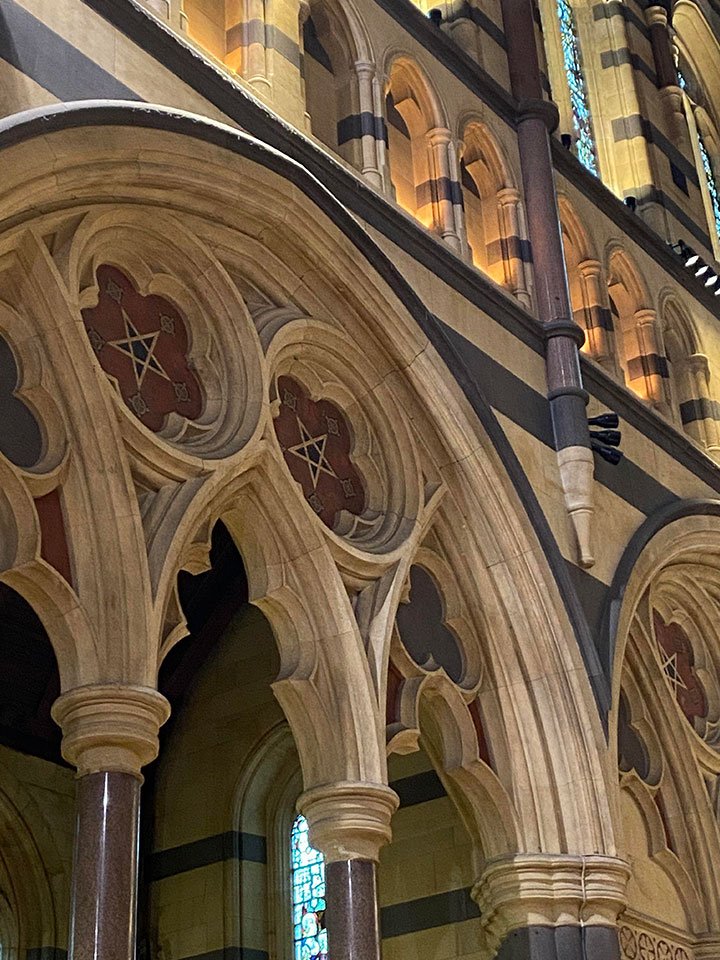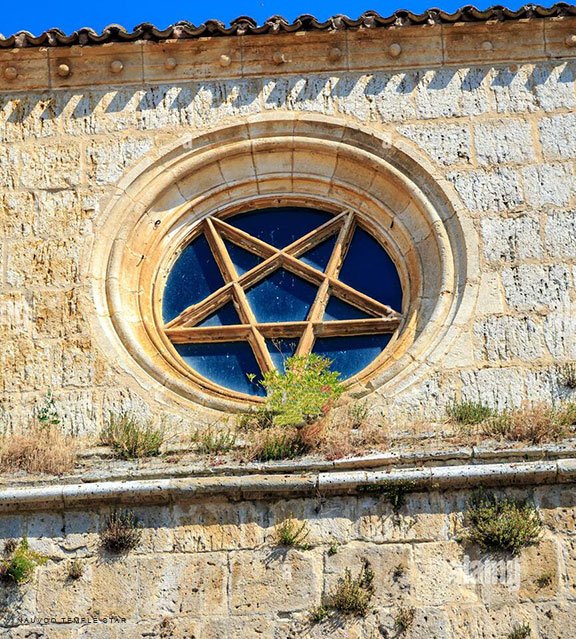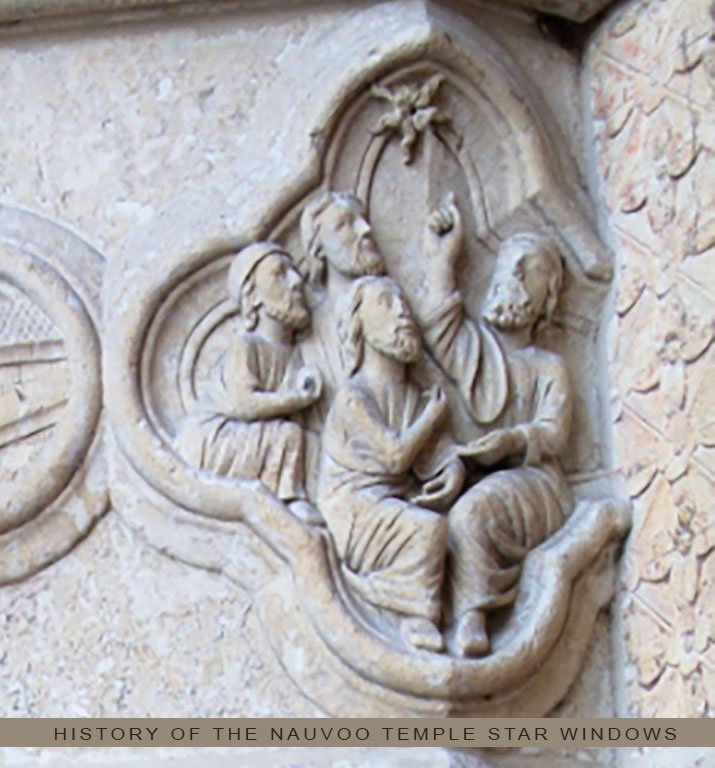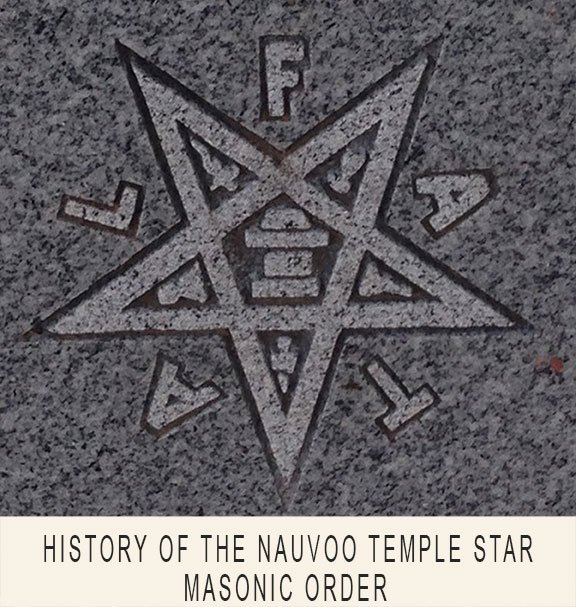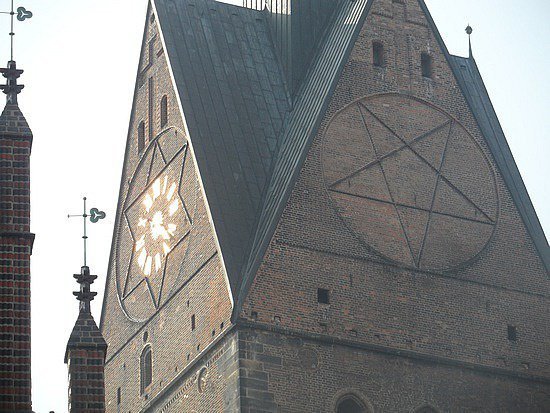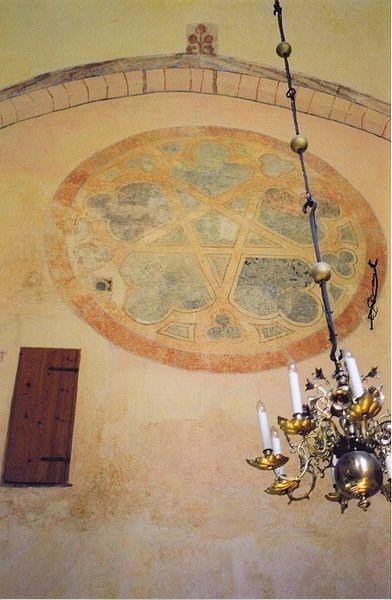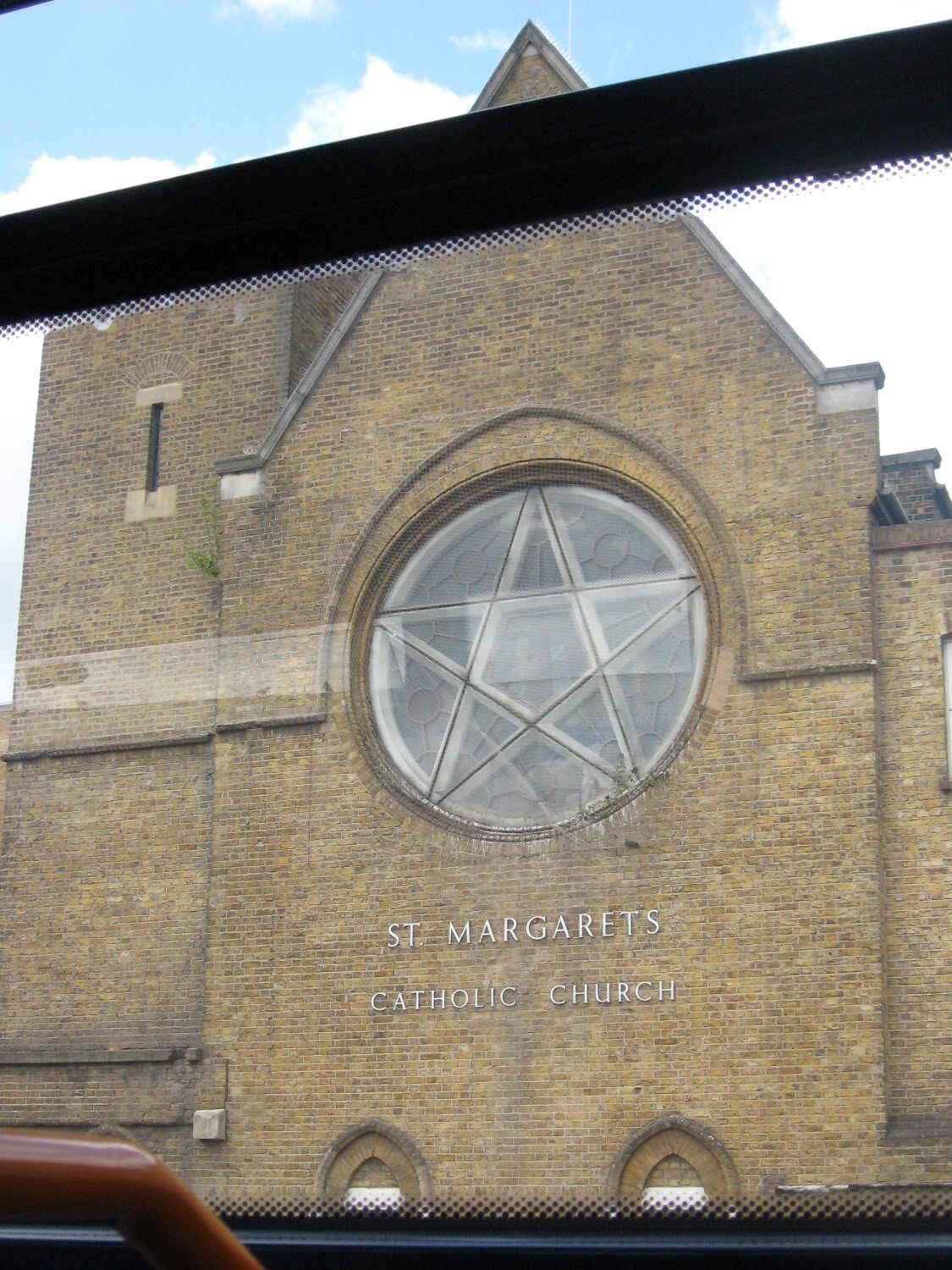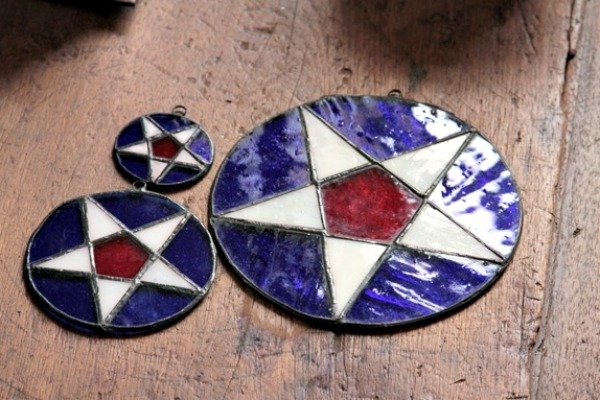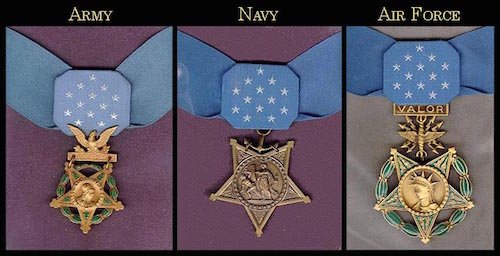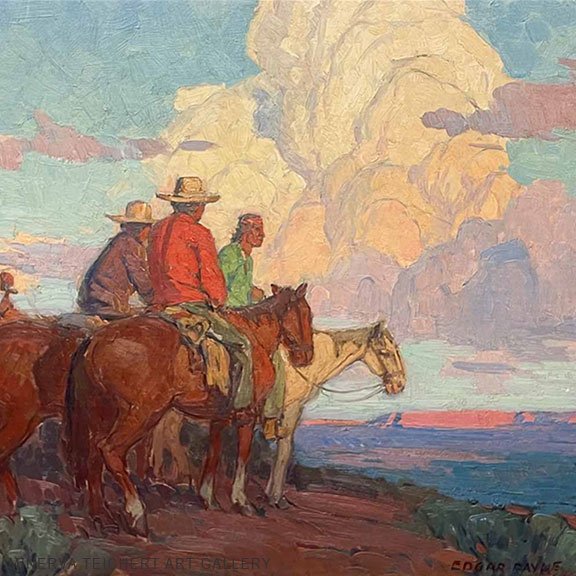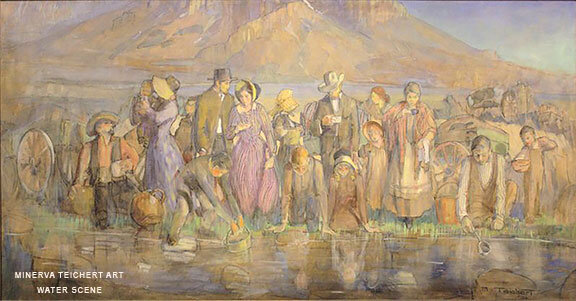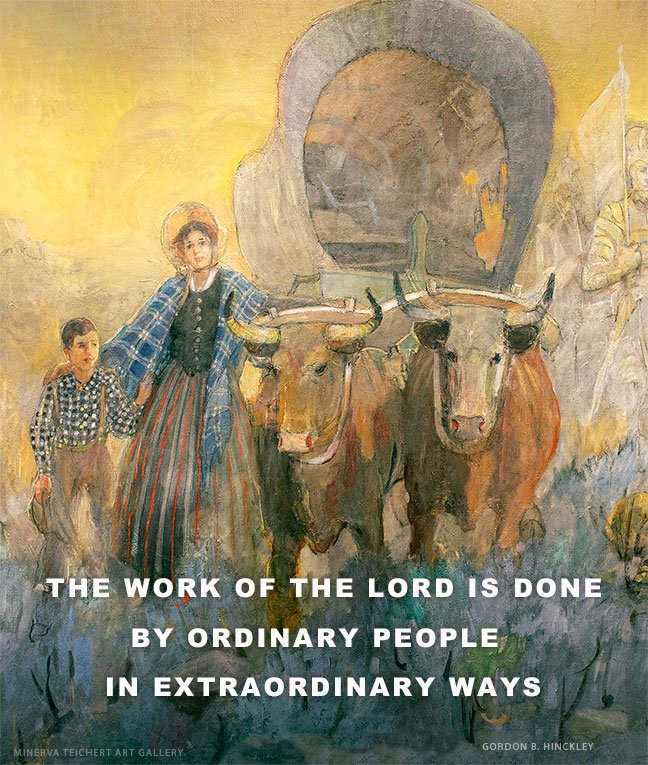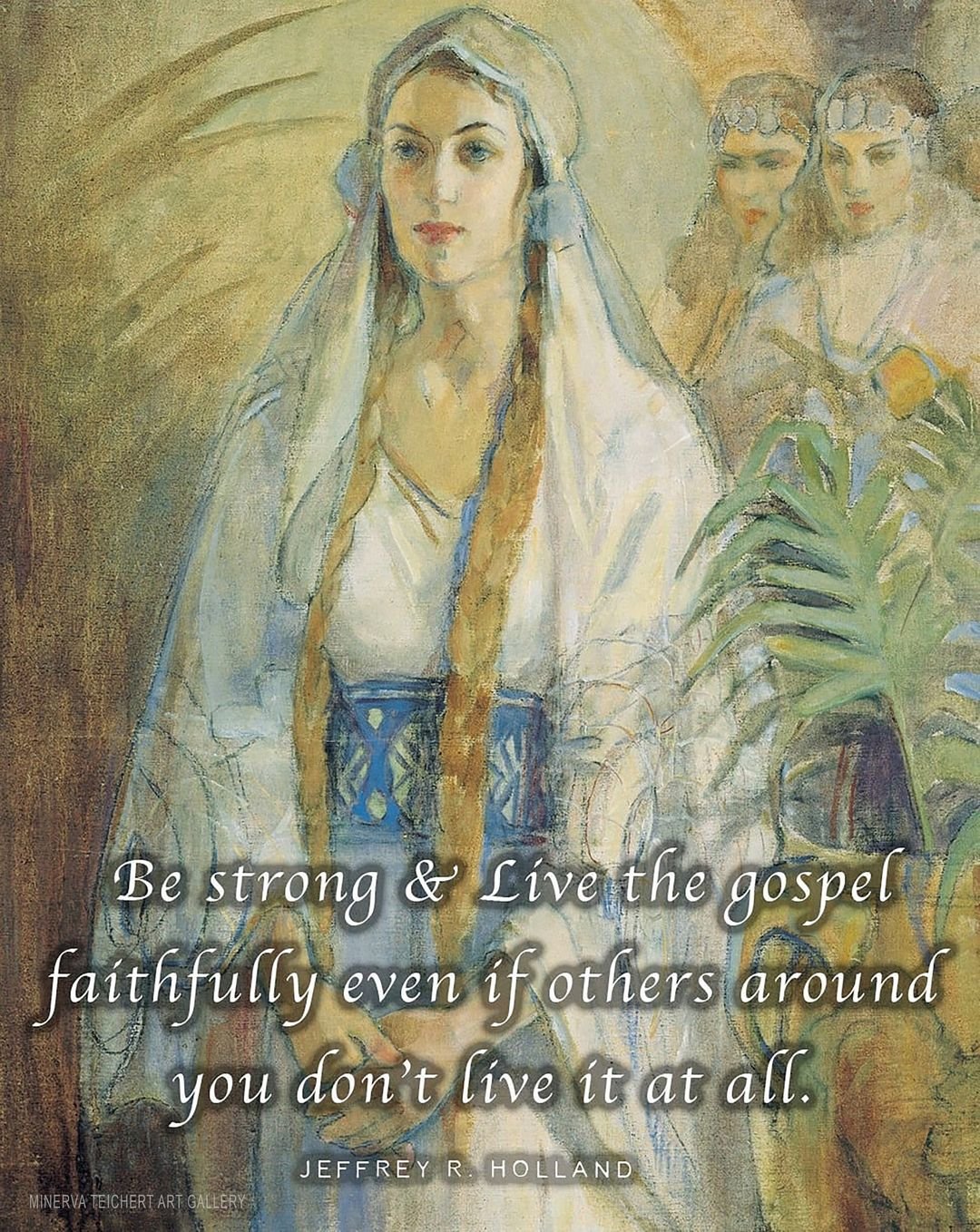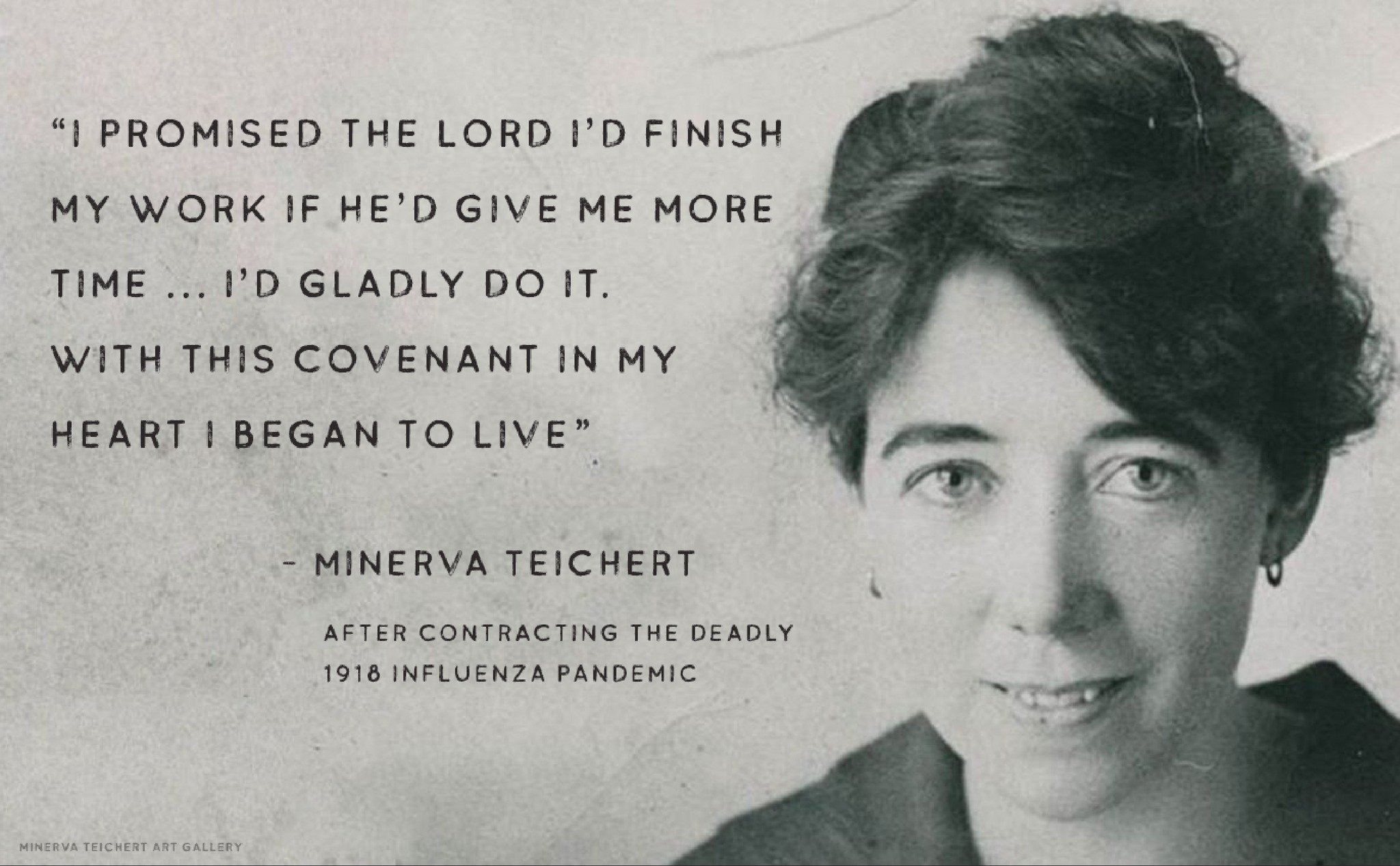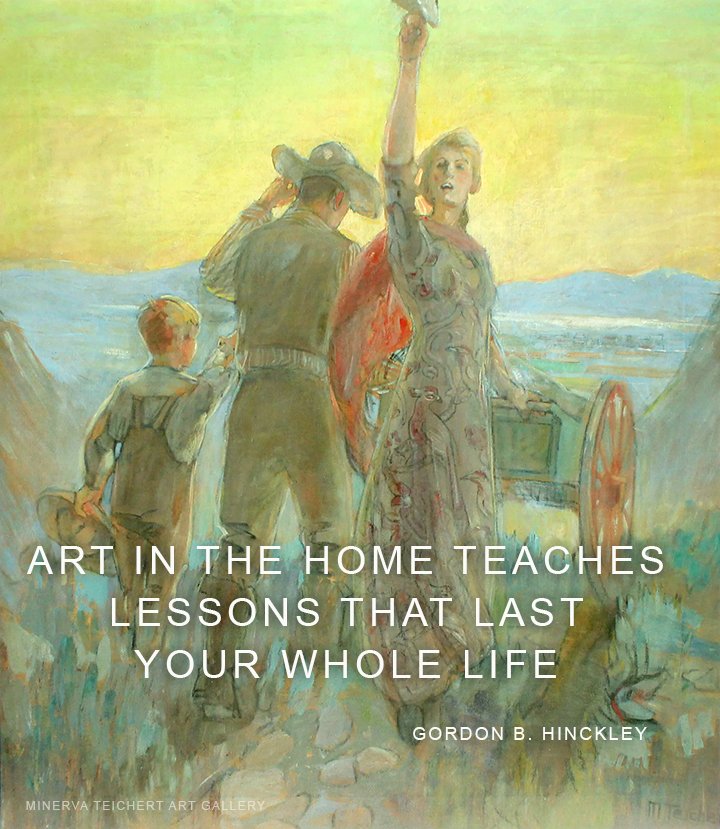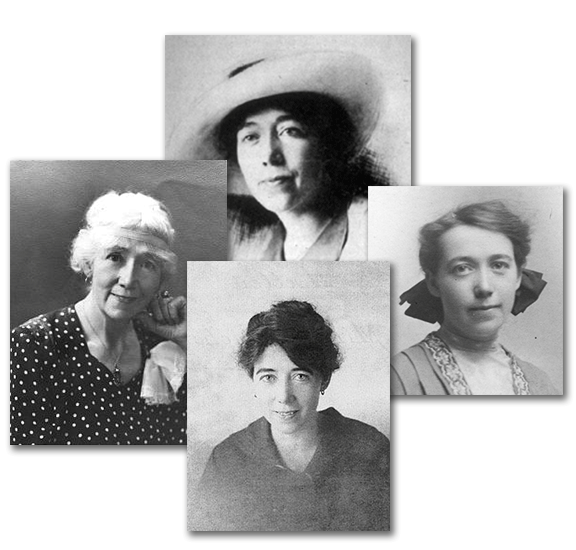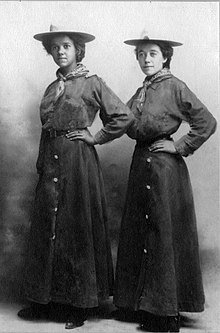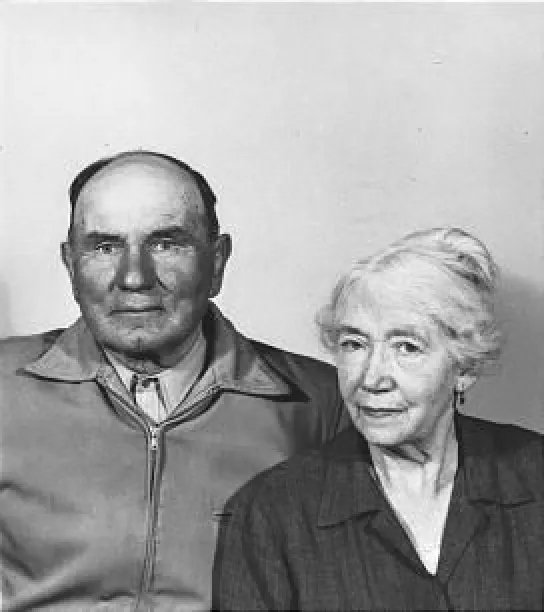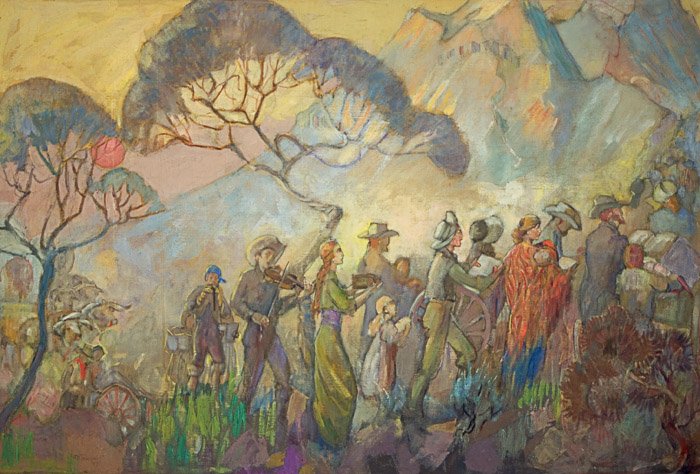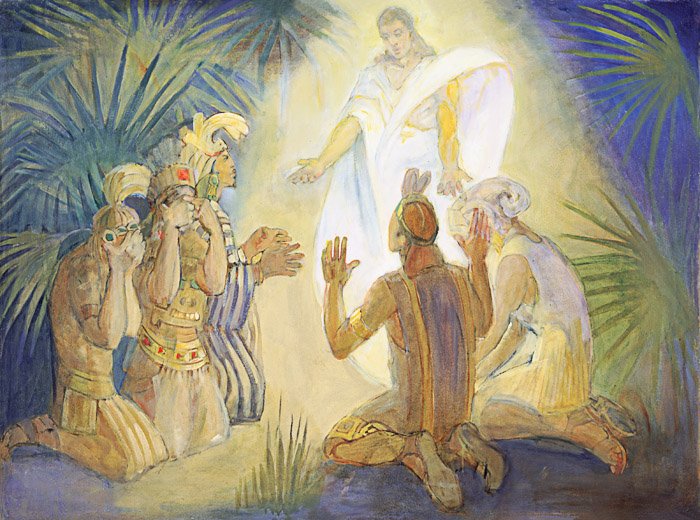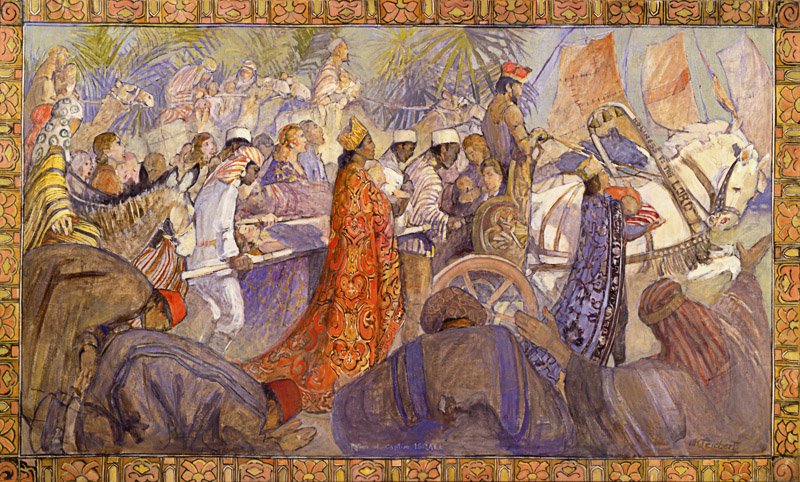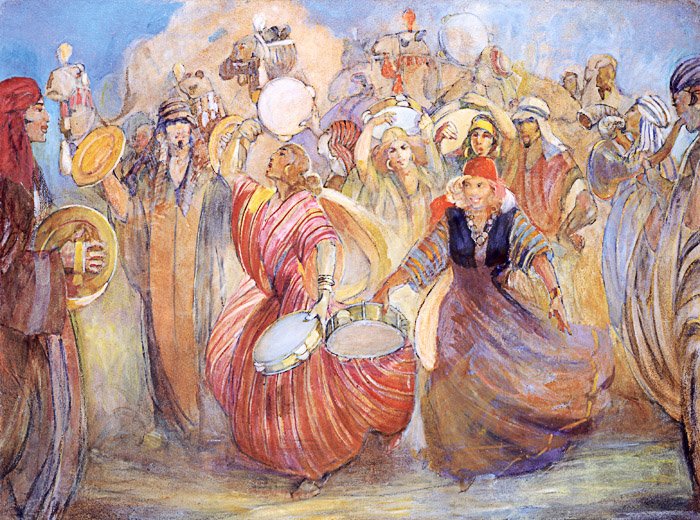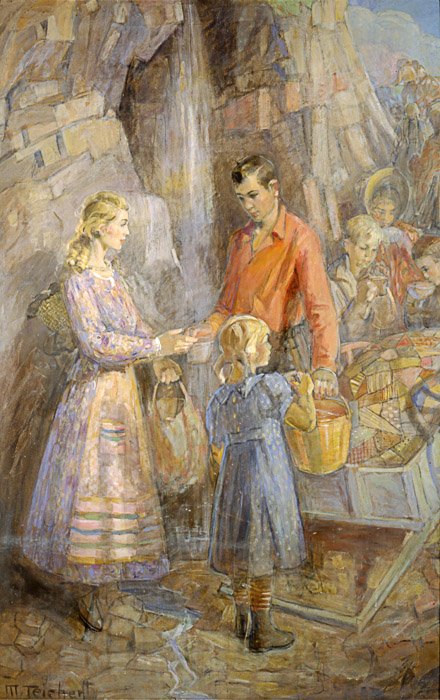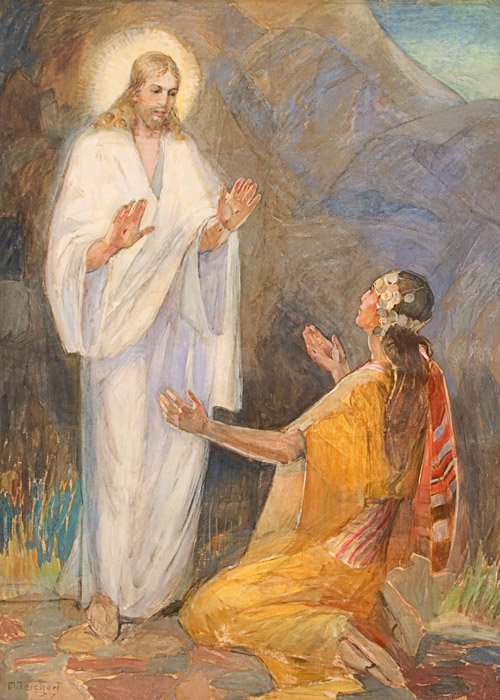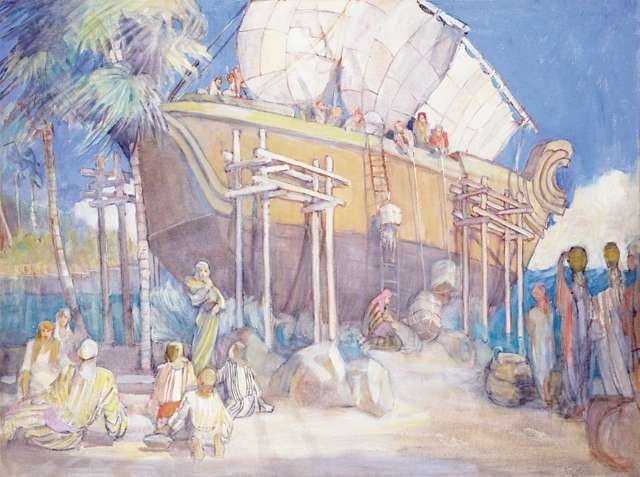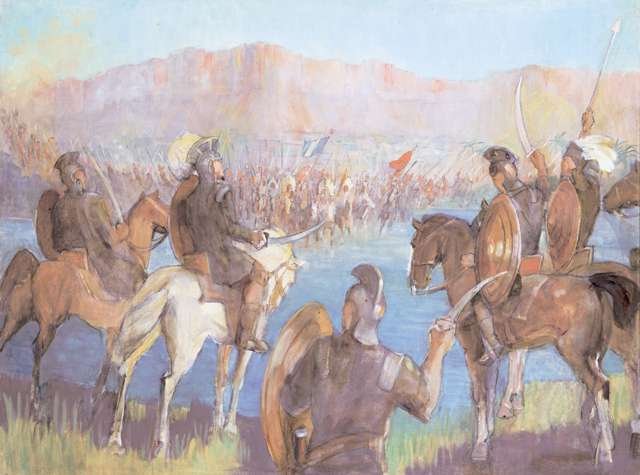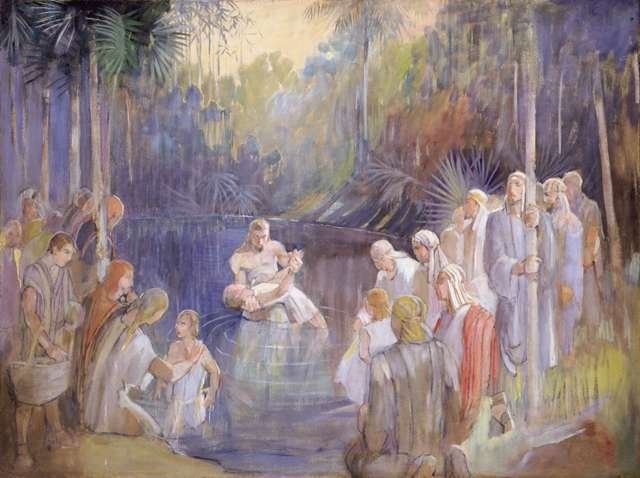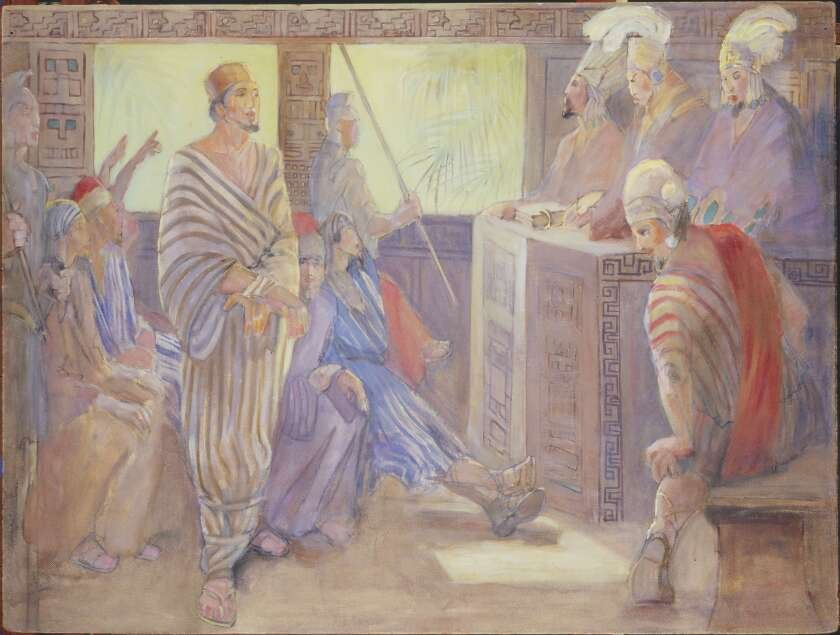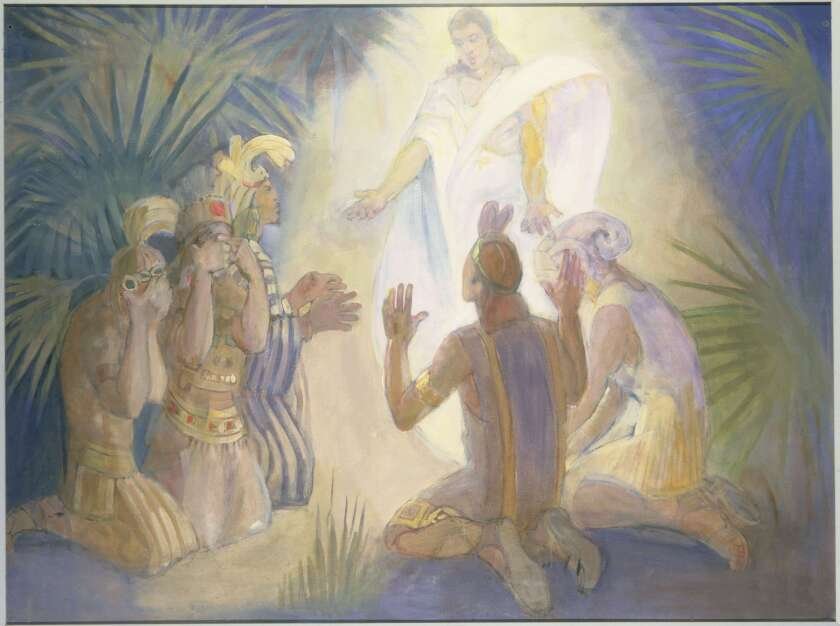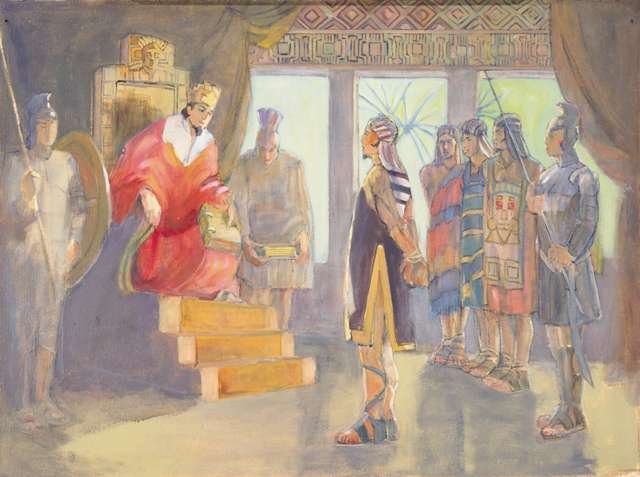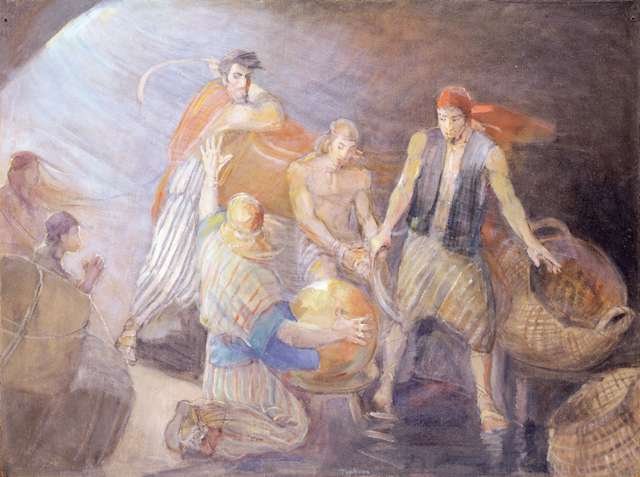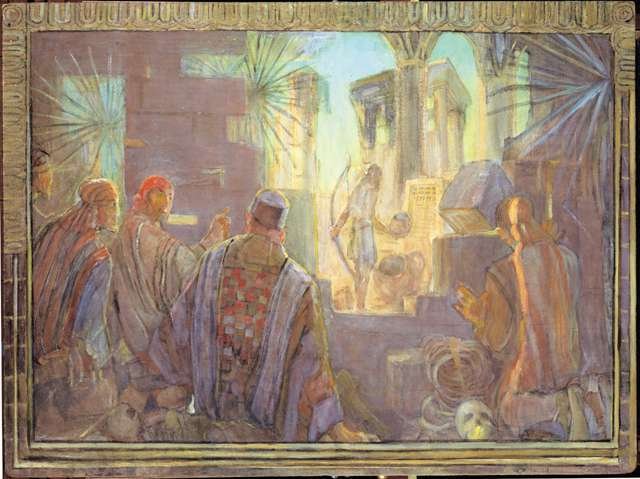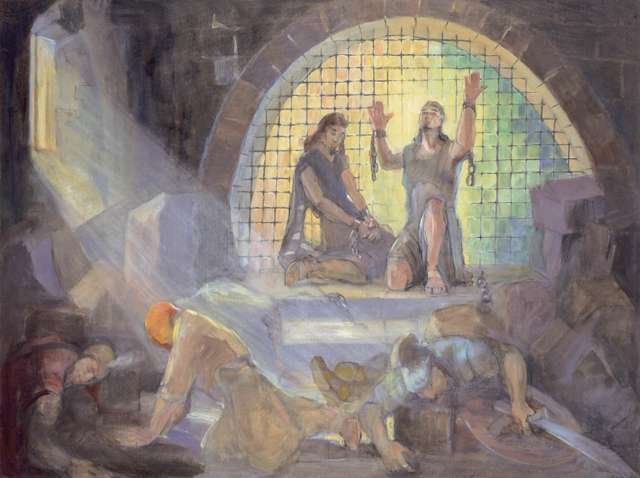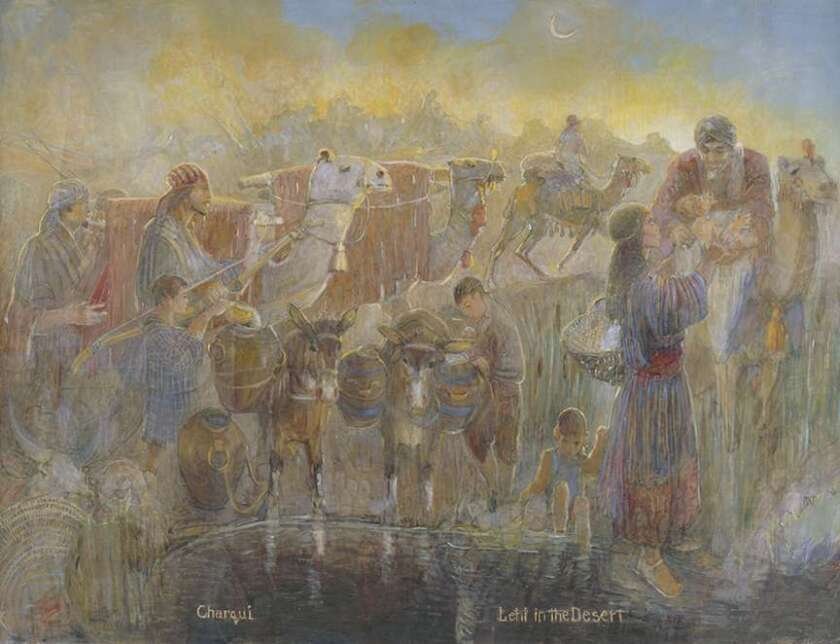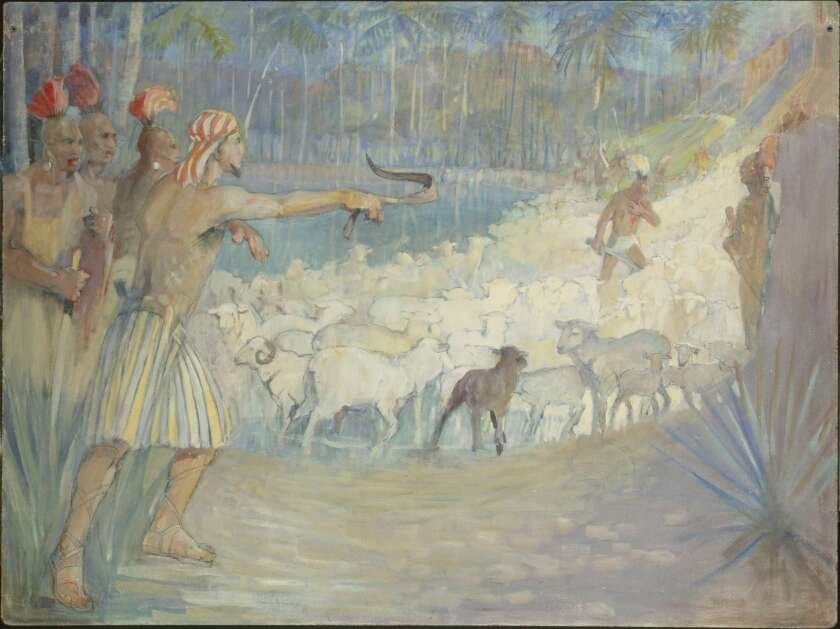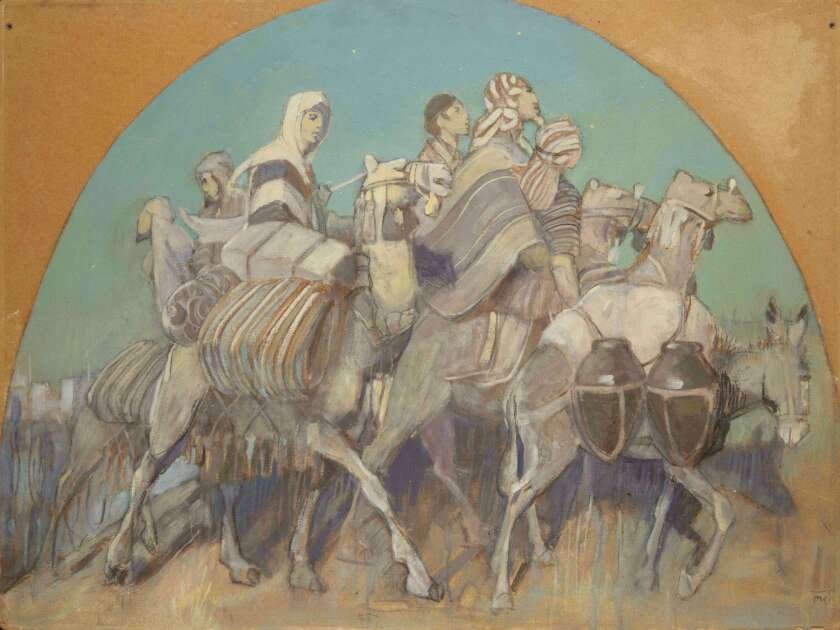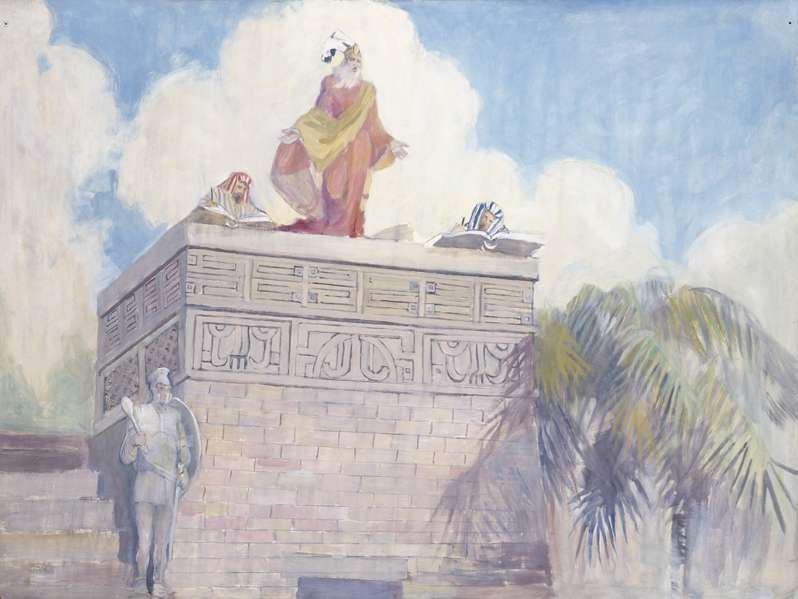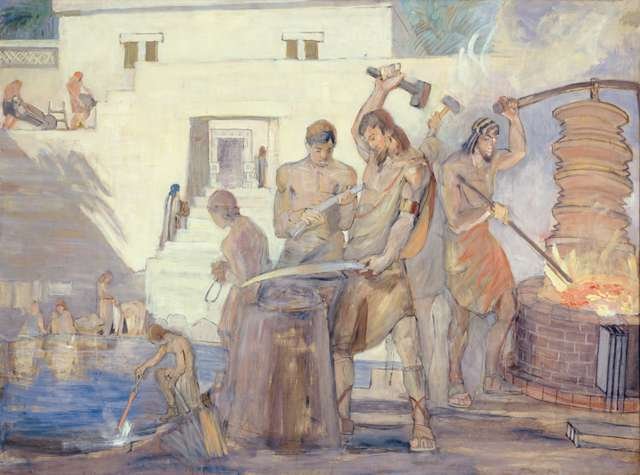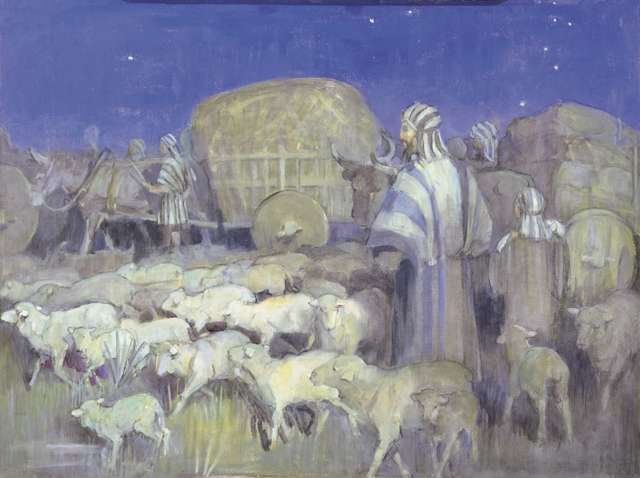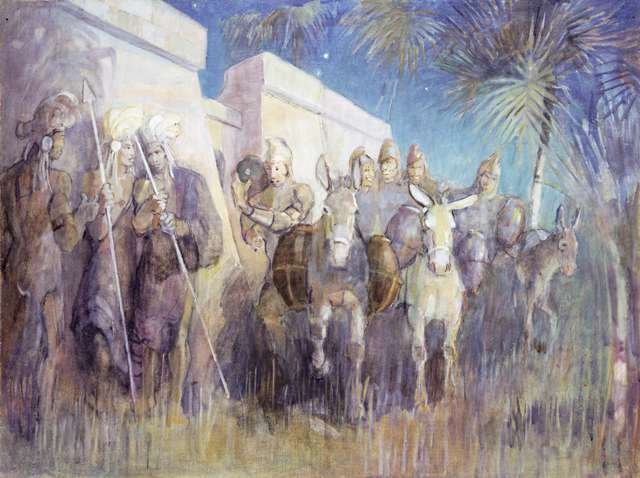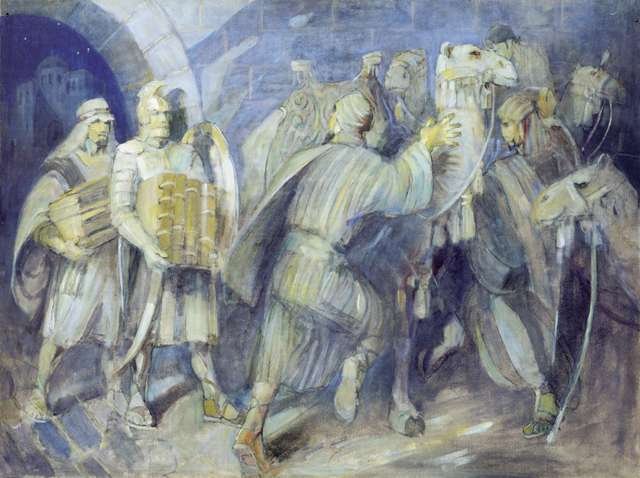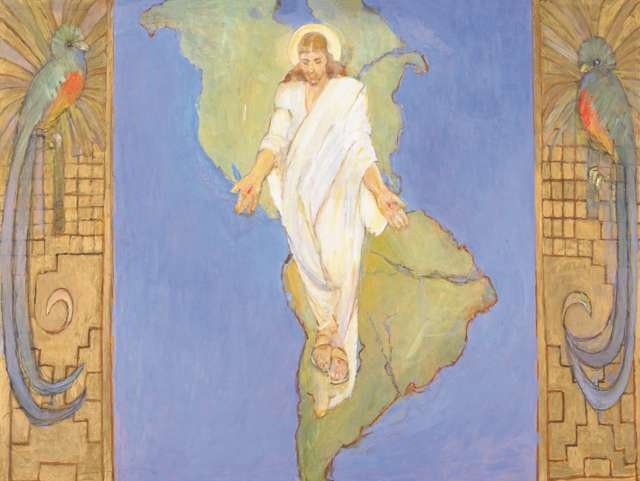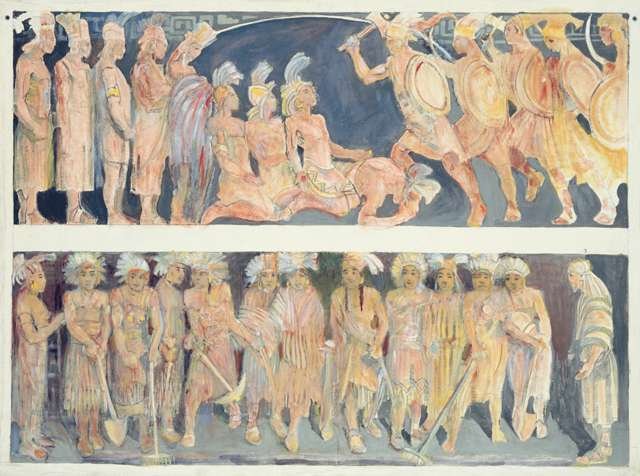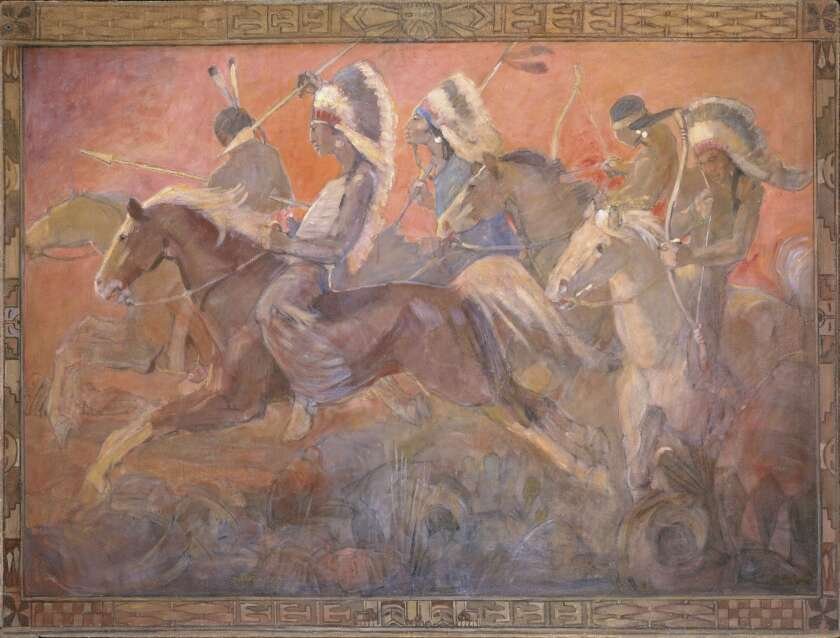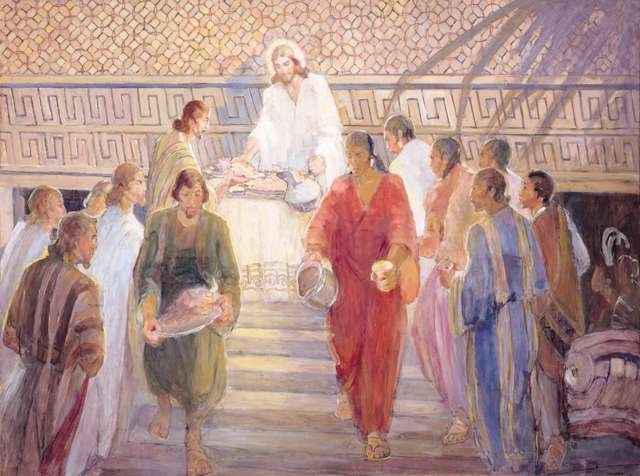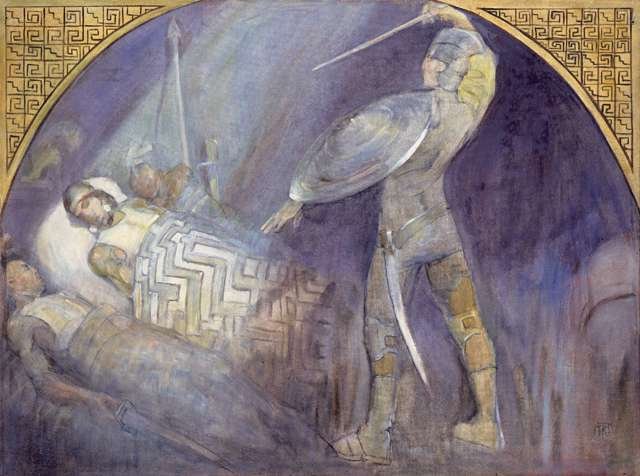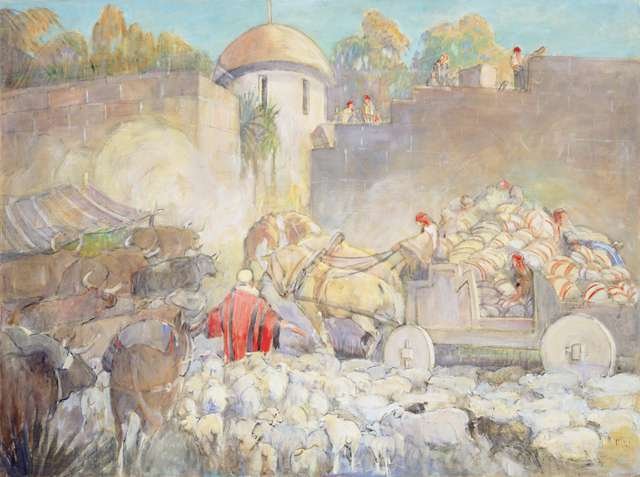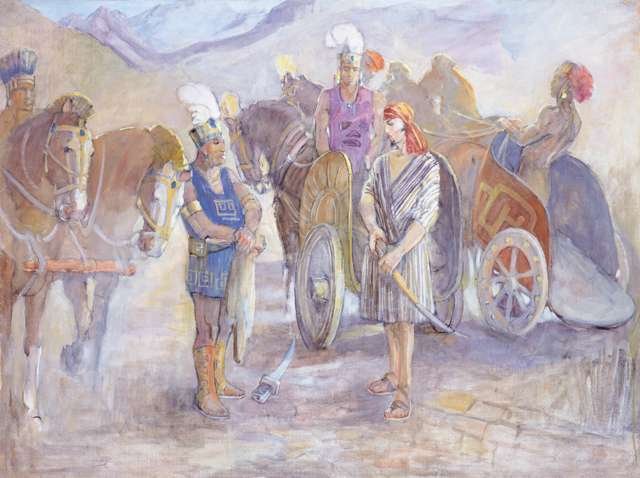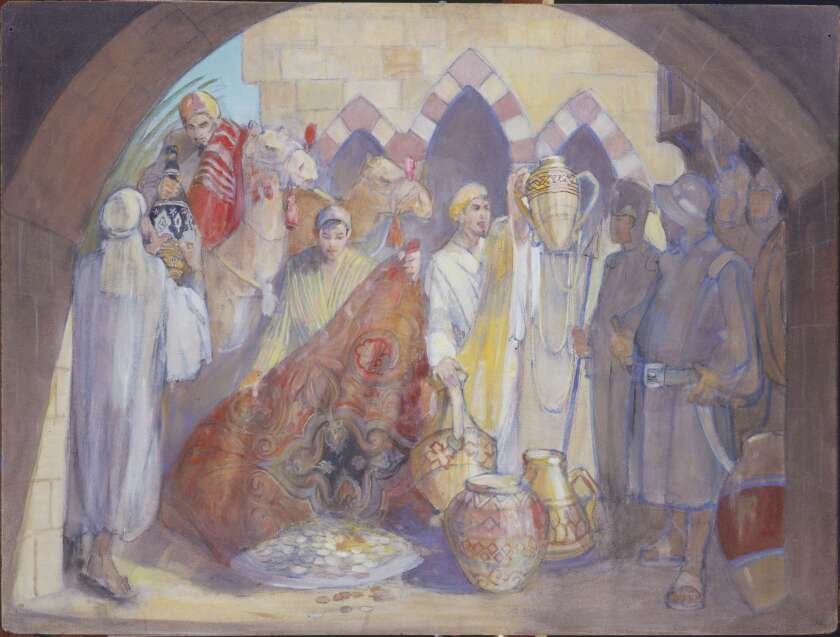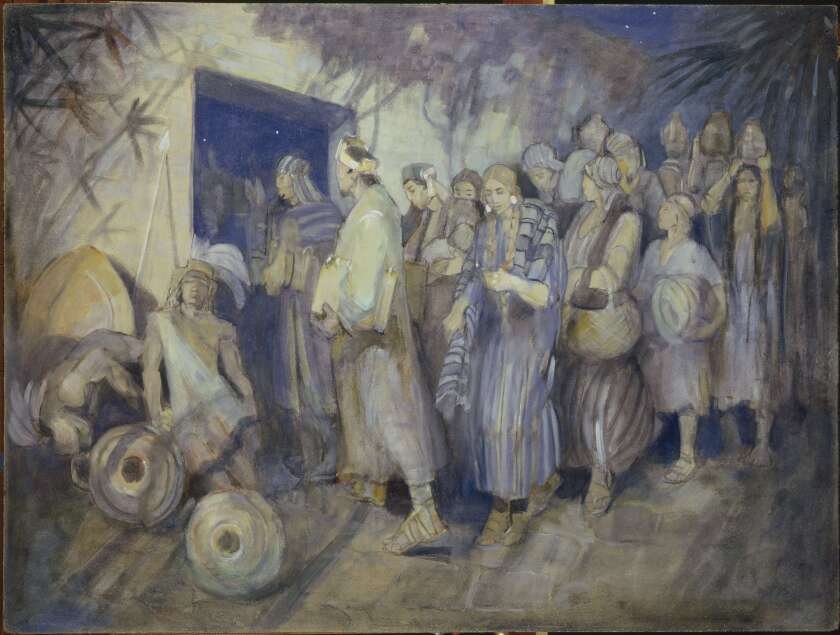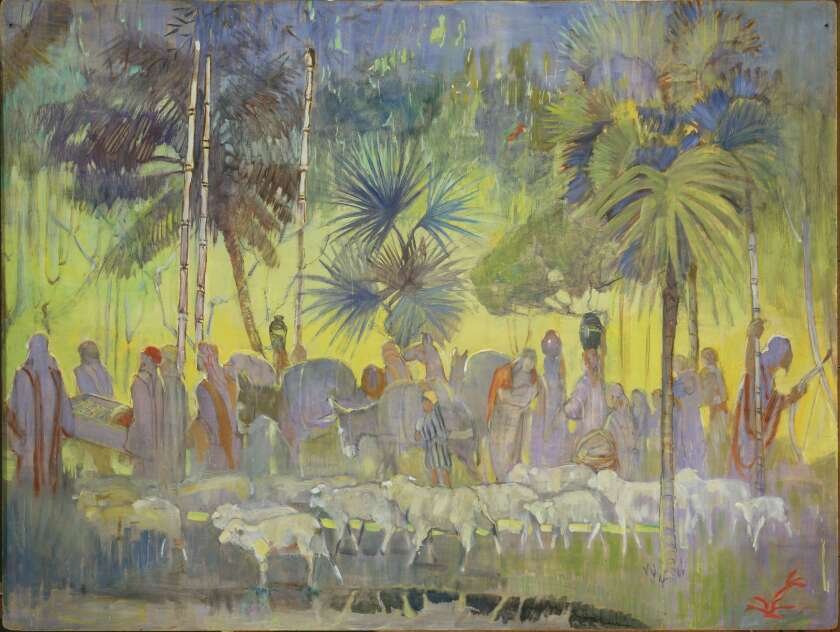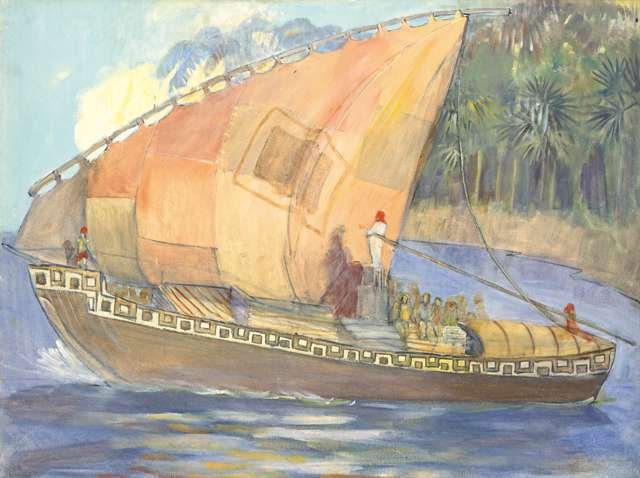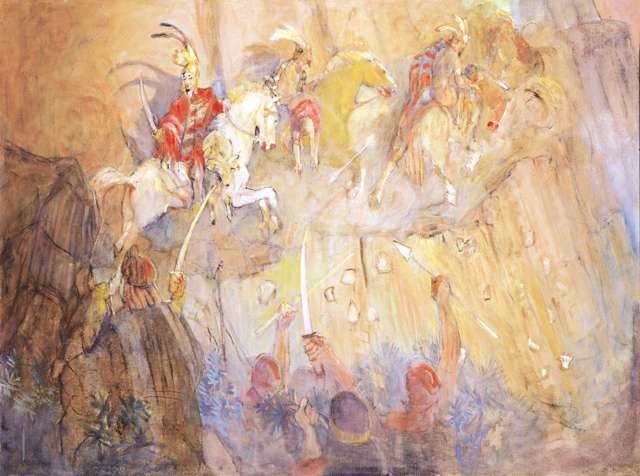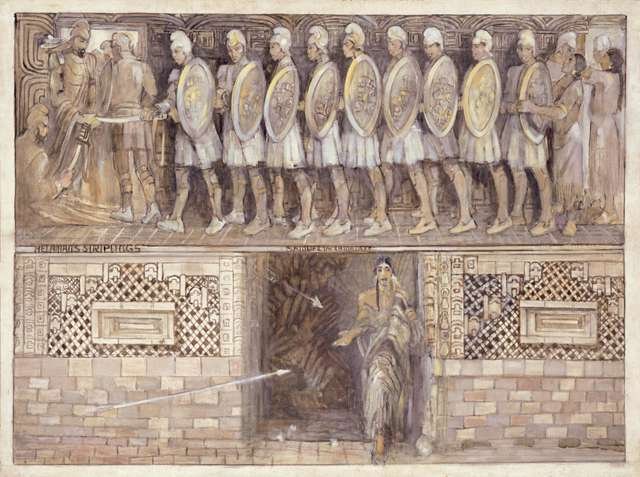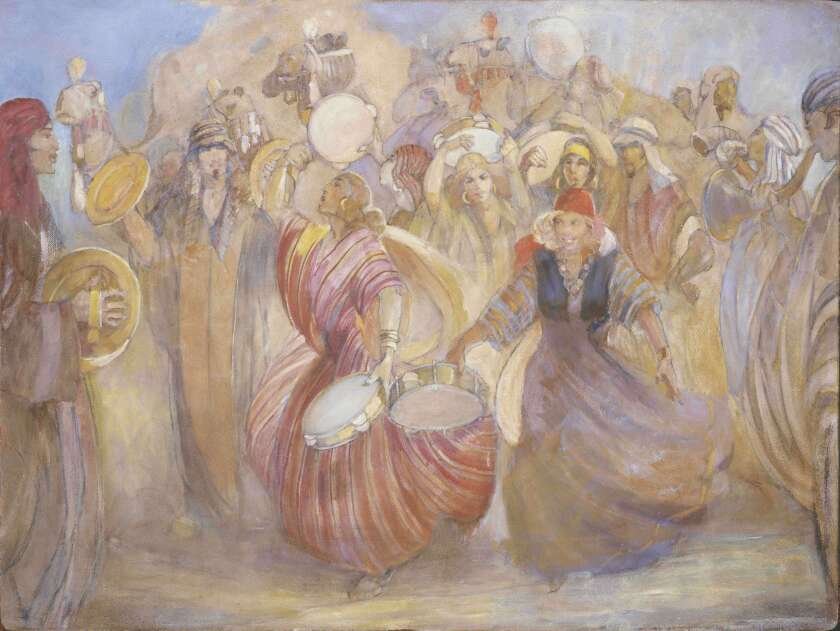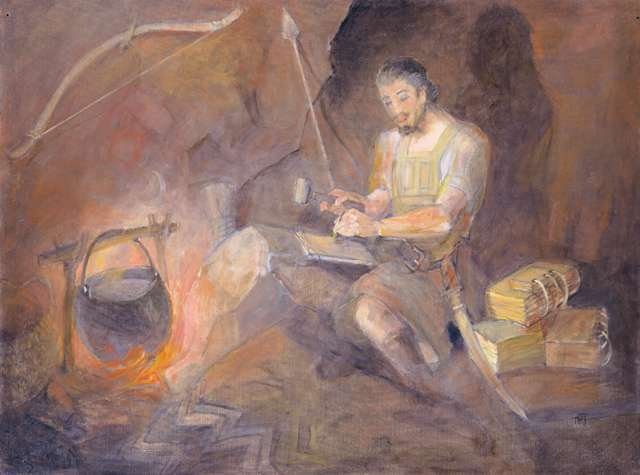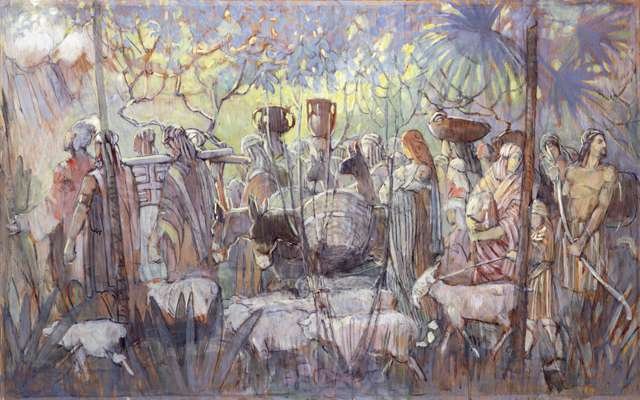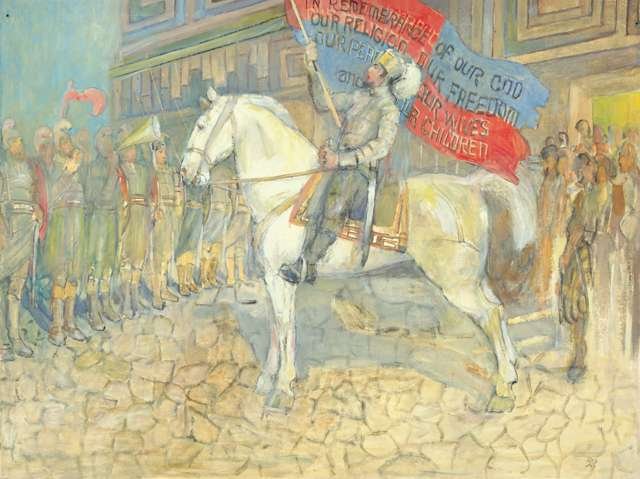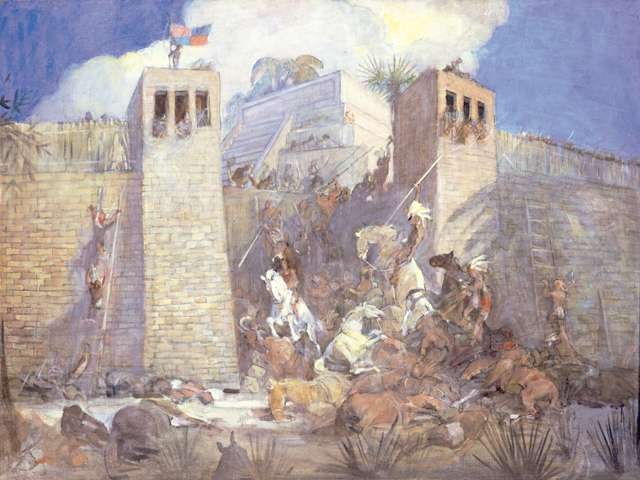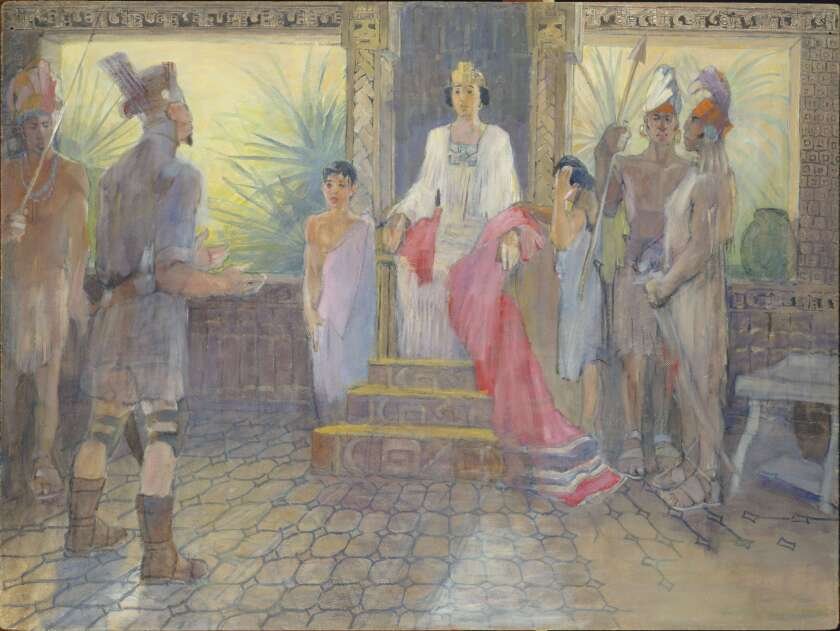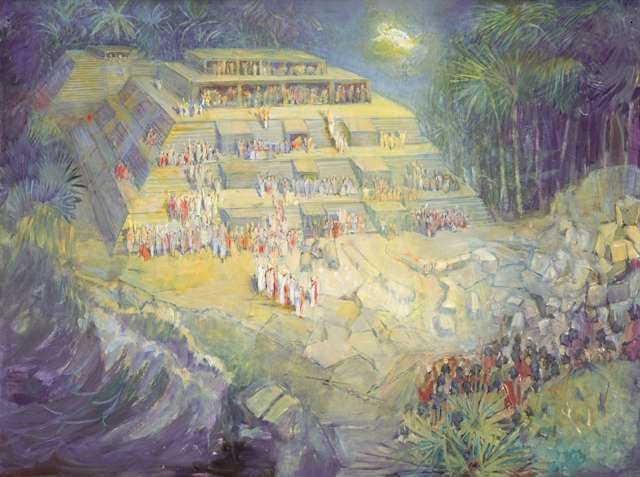
Preserving Minerva Teichert’s Paintings
Peeling Back the Paint: Preserving the Legacy of Minerva Teichert
When art curator Laura Paulsen Howe first looked at a 1931 newspaper photo of a lost Minerva Teichert painting, she saw a mystery. The image showed pioneers in a field, giving thanks as seagulls devoured the crickets that had nearly destroyed their crops. At the center stood a bearded man, arms outstretched in gratitude.
The painting was clearly Teichert’s, yet no record of its location survived. Letters from her agent hinted she may have tried to sell it, but historians had no answers.
The riddle lingered for ninety years—until 2021, when conservators cleaning Teichert’s Saved by Seagulls used infrared photography. Beneath its painted layers they found the missing composition, hidden in plain sight. “She must have painted over it sometime before the piece sold in 1937,” Howe said. “We don’t know why, but discovering it was exhilarating.”
That revelation became one of many stories shared by Howe and conservationist Shiree Roberts during a recent Church History Museum forum, Peeling Back the Paint. Their work highlights both the challenges and rewards of preserving Teichert’s art for the future.
A Painter on the Prairie
Teichert (1888–1976) was a rancher’s wife and mother in Cokeville, Wyoming, yet she managed to create hundreds of canvases. Her subjects spanned scripture, pioneer life, and the American West. A friend and advocate, Alice Merrill Horne, championed her career, helping place works in Latter-day Saint meetinghouses, temples, and public spaces across Utah.
But such exposure came at a cost. Madonna of 1847 hung within reach of students at South Cache High School. Not Alone spent years in a church gymnasium. By the time conservators received these works, they bore scars of decades of neglect—tenting paint, frame damage, even graffiti-like pencil marks.
“Sometimes it was hard to tell if a graphite line was Teichert’s or a student’s doodle,” Roberts recalled. Teichert often sketched on canvas and occasionally drew over finished paint. Distinguishing between the artist’s hand and a child’s graffiti required painstaking analysis.
Restoring What Time Took Away
Conservation, Roberts explained, is part science, part art. Madonna of 1847 required heat and adhesive to flatten curling paint, careful fills to repair losses, and a new backing to stabilize the canvas. Not Alone was so large that an eight-person team had to remove its frame just to maneuver it through a doorway before treatment.
Madonna of 1847 - by Minerva Teichert
Every decision demanded restraint. “We’ve got to respect the artist when we do these things,” Roberts said. “Our job is to preserve—not reinvent—what Minerva created.”
Howe noted the inherent tension: curators want paintings visible to the public; conservators want them shielded from light and touch. “Sometimes it feels like a tug-of-war,” she admitted. “But finding that balance is deeply satisfying.”
Science Meets Spirit
The hidden seagull painting revealed under Saved by Seagulls illustrates how modern technology can transform art history. Infrared photography exposed ghostly figures long thought lost, offering a rare glimpse into Teichert’s evolving vision.
At the same time, curators like Howe study her materials and preferences—pigments, varnishes, even her feelings about layering—to guide decisions. “When we conserve a piece, we’re doing our best to do it as Minerva would want it done,” Howe explained.
Roberts added that conservators come from wide-ranging fields—art, history, archaeology, and especially chemistry. Their goal is to extend the life of each canvas by at least fifty years. “We pull skills from all those disciplines to safeguard cultural heritage,” she said.
Preserving for Generations
The Church History Museum’s 2023 exhibition, With This Covenant in My Heart: The Art and Faith of Minerva Teichert, featured 45 original works and gave audiences a chance to see the results of this labor up close. Behind the scenes, hundreds of hours had gone into cleaning, stabilizing, and sometimes rescuing paintings once thought beyond saving.
For Howe, the work is about more than art. “These paintings carry Minerva’s faith and vision,” she said. “Thanks to the dedication of conservators, they’ll continue inspiring generations to come.”
Minerva Teichert Floral Paintings
Here is a small collection of some of the florals painted by Minerva Teichert
The History of Modern Youth Pioneer Trek
The first organized youth handcart trek, known as ‘ Pioneer Trek” which is a reenactment of the crossing os Saints on what is know as the Mormon Pioneer Trail, took place in 1966. Young men from the Phoenix Stake in Arizona built handcarts, transported them to Utah, and then walked them across the mountains. However, the modern-day tradition or trek reenactments is generally attributed to the 1997 Mormon Pioneer Trail Sesquicentennial Celebration. As part of a broader effort by The Church of Jesus Christ of Latter-day Saints to help youth connect with their pioneer heritage in a hands-on. Here's a brief history and context:
The Historical Pioneer Trek (1846–1869)
The original Mormon "trek" refers to the westward migration of members of the Latter-day Saints from Nauvoo, Illinois to the Salt Lake Valley, led by Brigham Young. Over 70,000 pioneers peacefully and with very little ill effect crossed the plains between 1846 and 1869, many of them on foot or pulling handcarts. The most famous and most talked about were the handcart companies that endured tremendous hardship and loss. They were known as the Willie and Martin handcart companies.
Early Commemorations (1950s–1970s)
While the Church always celebrated its pioneer heritage (especially on Pioneer Day, July 24), organized reenactments for youth were rare. Some families or local congregations may have organized informal hikes or activities related to pioneer stories.
🥾 Beginning of Youth "Pioneer Trek" Programs
The 1980s–1990s: Formalizing the Practice
The modern “Pioneer Trek” experience began gaining traction in the 1980s and early 1990s, especially in the Western U.S., as church leaders sought to give teenagers a faith-building experience rooted in sacrifice, teamwork, and testimony.Typical Pioneer Trek Activities
Youth dress in pioneer-style clothing, form temporary “families,” and pull handcarts over miles of rugged terrain—often on historical trails or local land. The experience usually includes:Pioneer stories and reenactments
Moments of spiritual reflection or testimony
Symbolic events like the “Women’s Pull” (representing times when pioneer women had to carry on without their husbands)
Church Support and Growth (2000s–Present)
By the early 2000s, Trek had become a common youth activity, particularly for those aged 14 to 18. The Church began offering resources and guidelines through official channels, ensuring safety and spiritual focus. While not mandated, Treks are now common in stakes (regional church units) around the world, especially in North America.
Purpose and Message
Trek is meant to:
Honor the faith and sacrifice of early Latter-day Saints
Help modern youth build testimonies through symbolic sacrifice and unity
Strengthen family values and intergenerational understanding
Provide a memorable, unplugged retreat in nature
Frequently Asked Questions:
In what months are treks allowed at the site?
End of May through mid-August. Trekking typically begins the Tuesday after Memorial Day and runs for 12 weeks.
What is the cost?
$15 per person, including all adult trekkers, leaders, staff members—even if they do not walk the trail. This fee is the same regardless of the length of the trek. The fee will be withdrawn from unit funds.
How many participants can be in one group?
The site accommodates groups up to 600 people. Groups will be divided into subgroups of 150 people for trekking at Martin’s Cove and Sixth Crossing. Groups will be divided into subgroups of 300 for trekking at Rocky Ridge. Each subgroup will start on the trail an hour apart. Some of the trek itineraries are not available for all group sizes.
How many handcarts are available?
The site will provide up to 15 handcarts for every trek of 150 people. It is recommended that 6-10 people be assigned per handcart.
Do missionaries accompany us on the trek?
Yes, two missionaries accompany each trek group on the trails. The missionaries set the pace for the group.
If you want missionaries to tell stories along the trail (either in addition to or instead of members of your own group preparing stories to share), please communicate this to the trek coordinators prior to your arrival.
Additional Pioneer Trek History Details
The migration of 19th-century Latter-day Saints, which began in 1846 from Illinois and continued through Iowa and Nebraska to a final refuge in the Rocky Mountains, stands as one of the most extraordinary chapters in America’s westward expansion. Unlike the thousands of settlers journeying to California or Oregon in search of prosperity, the Latter-day Saints were driven westward by necessity — expelled from Missouri and Illinois by hostile neighbors and rising persecution. In the years that followed, their trail would be traveled by thousands of European converts seeking religious freedom and a new beginning.
After the assassination of the Prophet Joseph Smith in 1844, tensions escalated in Nauvoo, Illinois — which was then the largest city in the state. Facing mounting threats, Church leaders recognized the urgent need to relocate. They first established a temporary haven known as Winter Quarters, near present-day Omaha, Nebraska. Then, in 1847, under the leadership of Brigham Young, the first group of pioneers set out into the unknown West. Upon arriving in the arid Salt Lake Valley that summer, Young surveyed the barren land and declared, “This is the right place.”
In 1849, President Young created the Perpetual Emigration Fund to aid impoverished converts in making the journey to Utah. The fund enabled roughly 30,000 immigrants from Britain, Scandinavia, Switzerland, Germany, and the Netherlands to emigrate — comprising more than a third of all Latter-day Saint converts who left Europe during that period.
To reduce costs associated with wagons and oxen, the Church introduced the use of wooden handcarts — a simpler, more affordable method of travel. Each cart, pulled by a small family or group of five, carried no more than 200 pounds of supplies, amounting to about 17 pounds of personal belongings per person. Organized companies shared tents, followed experienced leaders, and were accompanied by supply wagons pulled by oxen.
The first handcart company departed Iowa City on June 9, 1856, with 266 English immigrants, followed closely by a second group of just over 200. Though early handcart treks succeeded, they were grueling. Diaries from the trail recount hardships ranging from severe weather and illness to hunger, exhaustion, and the loss of fellow travelers.
A devastating chapter unfolded later that same year when the Willie and Martin handcart companies, totaling nearly 1,000 people, left too late in the season. Caught in a brutal October snowstorm on the high plains of Wyoming, the companies were beset by freezing temperatures, dwindling supplies, and exhaustion. Over 200 lives were lost to starvation and exposure before rescuers from Salt Lake City arrived in a desperate, heroic effort to save the survivors.
Whether traveling by wagon or handcart, thousands of pioneers perished along the trail. Many were buried in unmarked, shallow graves—some children, never to be visited again.
Between 1847 and 1869, until the completion of the transcontinental railroad, an estimated 70,000 Latter-day Saints undertook the journey to Utah. The pioneer experience remains deeply woven into the identity of Latter-day Saints. Their sacrifice is commemorated not only in family stories but also in Church meetings and youth reenactments — a living legacy of faith, endurance, and devotion.
Original Minerva Teichert Painting Found at Deseret Industries
On a very normal day David Anderson was managing the Deseret Industries store in Mesa, Arizona, when someone casually drove up to the outdoor donation dock. They dropped off a few old pictures and paintings that had been sitting in their garage and then drove away without a word.
One staff member noticed something unusual about one of the paintings and brought it into the office. Anderson took one look and immediately recognized it.
“That’s a Teichert,” he said, stunned.
What they had was an original painting by Minerva Teichert — albeit dusty, scratched, and speckled with grass clippings. The image depicted Jesus Christ blessing the Nephites. Teichert (1888–1976), a prominent Latter-day Saint artist, was known for her vivid depictions of gospel scenes, Old Testament stories, the Restoration, and the American West. Her work has adorned countless Church buildings and meetinghouses, but many of her pieces were also gifted to schools, families, and organizations over the decades.
A small sign later placed with the artwork confirmed its title: Christ Visits the Nephites (1956). It mentioned that the painting had been discovered at a Deseret Industries store, though it didn’t specify which one. It had since undergone professional conservation.
“There was a docent nearby,” Anderson recalled. “I couldn’t speak. I motioned for her to come over, and when she did, I finally said, ‘That’s my DI.’ She was shocked — ‘Really? We’ve always wanted to know the rest of the story.’”
When the painting first arrived, museum records noted it had vertical water drips across the left side, two deep dents, and curling, lifting paint along the edges. Conservators carefully cleaned the surface, treated the water stains, and used a heated conservation table to re-stabilize the paint. A conservation adhesive was then used to mount the original canvas onto a new one.
“The result was excellent,” the record stated.
Anderson, a longtime admirer of Teichert’s work, was amazed that such a piece had landed at his store without fanfare. He was never able to trace how it had ended up in Arizona or whose garage it had sat in. But his team contacted the Church History Museum in Salt Lake City, which expressed immediate interest. One of the assistant managers personally drove the painting to Utah and delivered it to the museum.
“They were thrilled to receive it,” Anderson said.
In the years since, Anderson — now managing the Gilbert, Arizona, DI — kept an eye out for any mention of the painting. He searched online, in Church publications, and in stores, wondering if it might resurface in a book, a chapel, or as a print. But he never saw it again.
Then, on Monday, June 24, during a trip to Salt Lake City for meetings, Anderson found himself with a bit of free time. He walked over to Temple Square and made his way to the Church History Museum — a place he hadn’t visited in years.
He was deeply moved by the exhibits on the First Vision and Liberty Jail. Then he learned there was an upstairs gallery featuring Minerva Teichert’s work. As he admired the paintings, he figured his DI find was long gone or tucked away in storage.
But then he turned a corner and entered a room dedicated to the conservation of Teichert’s artwork.
“And there it was,” Anderson said. “I was very emotional.”
100 years of Broadcasting General Conference
100 Years on Radio - 50 Years on Television - 25 Years Online
The first general conference of The Church of Jesus Christ of Latter-day Saints took place on a small farm in the forests of western New York. About 40 Church members — along with some friends and other interested people — crowded into the log home of Peter and Mary Whitmer on Wednesday, June 9, 1830, in the township of Fayette in Seneca County, New York.
At that time, the entire Church had fewer than a dozen priesthood holders. The minutes for that meeting reveal that Joseph Smith read the “articles and covenants” — or what would become Doctrine and Covenants 20 — which were received by unanimous voice of the entire congregation.
Oliver Cowdery ordained Samuel Smith an elder; then Joseph Smith Sr. and Hyrum Smith were ordained priests.
Read Full Article: Click Here
Five Best Museums to Experience Minerva Teichert's Art
Minerva Teichert, a pioneering artist of the American West, left an indelible mark on the art world with her captivating depictions of Western landscapes, biblical narratives, and scenes from Mormon history. Her bold use of color, dynamic compositions, and distinctive style have earned her a revered place in the annals of American art. For art enthusiasts eager to immerse themselves in Teichert's masterpieces, several museums across the United States offer unparalleled opportunities to experience her work firsthand. Let's embark on a journey to discover the best museums to see Minerva Teichert's art.
1. Brigham Young University Museum of Art (Provo, Utah):
As the largest repository of Minerva Teichert's artwork, the Brigham Young University Museum of Art boasts an extensive collection of her paintings, murals, and drawings. Visitors can marvel at Teichert's vivid portrayals of Book of Mormon stories, Western landscapes, and religious themes, providing insight into her unique artistic vision and cultural heritage.
2. Springville Museum of Art (Springville, Utah):
Located in Teichert's hometown of Springville, Utah, the Springville Museum of Art features a significant collection of her artwork, including paintings inspired by Mormon pioneer history, Western life, and biblical narratives. The museum's comprehensive display offers visitors a comprehensive overview of Teichert's diverse oeuvre and artistic evolution.
3. National Cowboy & Western Heritage Museum (Oklahoma City, Oklahoma):
The National Cowboy & Western Heritage Museum houses a notable selection of Minerva Teichert's Western-themed paintings, showcasing her talent for capturing the spirit of the American frontier. Visitors can admire Teichert's dynamic compositions, vibrant colors, and evocative portrayals of cowboy culture, ranch life, and Western landscapes.
4. Church History Museum (Salt Lake City, Utah):
Situated near Temple Square in Salt Lake City, the Church History Museum features several of Minerva Teichert's iconic murals depicting scenes from Mormon history, including the pioneer trek westward and key events from the Book of Mormon. Teichert's murals offer a visually compelling narrative of the Church's heritage and legacy.
5. Utah State University Merrill-Cazier Library (Logan, Utah):
The Utah State University Merrill-Cazier Library houses a notable collection of Minerva Teichert's artwork, including paintings, sketches, and illustrations. Visitors can explore Teichert's dynamic brushwork, expressive style, and thematic diversity, gaining a deeper appreciation for her contributions to American art.
Minerva Teichert's art continues to captivate audiences with its vibrant colors, evocative imagery, and rich storytelling. Through her paintings, murals, and illustrations, Teichert immortalized the landscapes, legends, and lore of the American West, leaving a lasting legacy that resonates with viewers of all backgrounds. For art enthusiasts eager to experience the beauty and depth of Teichert's work, the aforementioned museums offer unparalleled opportunities to immerse themselves in her masterpieces, gaining insight into her artistic vision, cultural heritage, and enduring influence on American art and culture.
General Conference Then & Now
The very first “General Conference” which was then only called Conference was convened by Prophet Joseph Smith on June 9, 1830. The group in attendance was around 30 members. Fast forward to today, and the Conference Center adjacent to Temple Square in Salt Lake City, Utah, USA, accommodates a staggering 21,000 members. The reverberations of the conference's messages extend far beyond this gathering, as they are translated into 93 different languages and transmitted to millions and millions worldwide via radio, television, satellite, and, Internet connections.
In tracing the evolution of general conference from its inception in 1830 to the present day, we witness a remarkable transformation. From humble beginnings, such as the outdoor bowery where members gathered in 1848, to the grandeur of the Conference Center, these photographs capture the enduring spirit and growth of this sacred tradition.
Starting in 1840, Church General Conferences became biannual events. These conferences remained unstopped even through all the numerous migrations of the Latter-day Saints. In 1848, early pioneers in the new Salt Lake Valley convened their inaugural general conference in what was known as an open-air bowery, like the one depicted on the right of the above photo. Basically it was an outdoor open area covered by tree limbs and leaves. The tree branches could be dipped in or sprinkled with water and any breeze in their shade would provided some cooling effect. Following this, the Saints erected an adobe tabernacle (seen on the left of the above photo) as their gathering space utilizing it until the construction of the Full Tabernacle was finalized in 1867. This photo is rare and offers a glimpse of the Saint’s early life on Temple Square.
The General Conference of The Church of Jesus Christ of Latter-day Saints has a rich history dating back to the early days of the Church. Here's an overview of its evolution and significance:
1. Origins
The first recorded general conference of the Church took place on June 9, 1830, shortly after the Church was officially organized by Joseph Smith in Fayette, New York. Initially, conferences were held irregularly and in various locations as the Church was still in its formative years.
2. Establishment of Semiannual Conferences
In 1832, the Church began holding conferences more regularly, with the first semiannual general conference convened in September of that year. This pattern of holding semiannual conferences—typically in April and October—has continued to the present day.
3. Growth and Expansion
As the Church grew and expanded, so did the general conferences. They became important gatherings for Church leaders and members to receive guidance, instruction, and inspiration from Church leaders, including the President of the Church and members of the Quorum of the Twelve Apostles.
4. Physical Locations
In the early days, general conferences were held in various locations, including churches, tabernacles, and even outdoors. In 1867, the iconic Salt Lake Tabernacle was completed, providing a permanent and central location for general conferences in Salt Lake City, Utah.
5. Broadcast and Technology
With advancements in technology, general conferences began to be broadcast via radio in the early 20th century, allowing members outside of Utah to participate remotely. Over time, broadcasts expanded to include television, satellite, and internet streaming, making the conferences accessible to millions of members worldwide.
6. Conference Structure
General conferences typically consist of several sessions held over the course of two days, with talks and addresses delivered by Church leaders. These sessions include messages of spiritual guidance, doctrinal instruction, and announcements regarding Church organization and policy.
7. Global Reach
Today, general conferences of The Church of Jesus Christ of Latter-day Saints are truly global events, with members from around the world participating remotely in their native languages. The proceedings are translated into numerous languages, allowing members to receive counsel and inspiration in their own tongues.
8. Continuing Tradition
The tradition of holding semiannual general conferences continues to be a cornerstone of the Church's governance and spiritual life. These conferences provide an opportunity for Church leaders to address the worldwide membership, reinforce core doctrines and principles, and strengthen the bonds of unity and faith among members.
Overall, the history of the general conference reflects the growth, vitality, and enduring spiritual heritage of The Church of Jesus Christ of Latter-day Saints. It remains a cherished tradition that unites members worldwide in worship, learning, and fellowship.
Brigham Young’s Christmas Donut Recipe
This original recipe for buttermilk donuts was contributed by Sister Naomie Young Schettler, a granddaughter of Brigham Young. It was first made by Emily Partridge Young, Sister Schettler’s grandmother. A favorite with President Young, the donuts became so popular that they eventually were sold at the Zion’s Cooperative Mercantile Institution department store in Salt Lake City.
5 1/2 cups all-purpose flour
2 teaspoons baking soda
1 teaspoon salt
1 1/2 teaspoons ground nutmeg
2 cups buttermilk
2 large eggs, beaten
1 1/4 cups granulated sugar
6 tablespoons butter, melted
Oil, for frying
Granulated or powdered sugar, optional
Ground cinnamon, optional
Combine ingredients, kneading in enough flour to make a soft dough, not too sticky. Roll out and cut into doughnuts. Fry in deep, hot oil.
The History of the Nauvoo Temple Star Windows
THE BEAUTIFUL CHRISTIAN HISTORY OF THE INVERTED STAR
The beautiful inverted stained glass star windows adorning the Nauvoo Temple possess a rich historical significance dating back to the early Christian era. These Nauvoo Temple star windows, known as the "Morning Star" from Revelation 22:16, symbolize Jesus Christ. Intriguingly, when we track the orbit of the Morning Star, which looks like a star in the later morning sunrise, but is actually the planet Venus, it forms a perfect mathematical inverted five-point star.
This inverted star, etched in stone during Old Testament times, still endures on surviving structures and within numerous museums around the world. In 312 A.D., it was merged with the cross and featured on doors, windows, banners, and even battle armor, serving as a symbol of goodness and protection against evil. Early Christians revered the inverted star as an emblem of Christ, and many ancient cathedrals and churches in Europe were embellished with these inverted stained glass stars. Early Christian records tell us that it symbolized the five wounds Jesus Christ endured during the crucifixion.
Renowned shrines such as the Notre Dame Amiens Cathedral in France (constructed in 1230 A.D.) and the Marketirche church in Germany (erected in 1350 A.D.), as well as the Catholic Collégiale Notre-Dame de Vitry-le-François, a 17th-century structure that survived World War II, still to this day display massive stained glass inverted star windows.
Across centuries, this symbol has graced countless edifices, windows, and banners. It embellished many early American structures and churches and could be spotted on barns, residences, and gates of early colonial families. The inverted star featured on various iterations of the United States Flag until 1876, with the most famous being the one that fluttered above Fort McHenry in 1814, inspiring the verses of the Star-Spangled Banner. In 1862, the U.S. Congress mandated the Philadelphia Mint to craft the National Medal of Honor, the highest military accolade. Its design prominently includes the inverted five-point star, still in use today across all branches of the military. The inverted star enjoys wide usage in various forms, from sheriff's badges to the emblem of the Republican Party featuring an elephant.
In contrast to the grand, intricate stained glass inverted stars found in famous cathedrals, the early Nauvoo Latter-day Saints had only limited resources to create a modest three-colored inverted star stained glass window. They opted for red, white, and blue. Despite its simplicity, this design was met with mockery in a nearby newspaper, labeled as a "pitiful attempt." Nevertheless, the humble inverted stars on the Nauvoo Temple brought joy to those who beheld them each evening when they were backlit.
Upon the reconstruction and dedication of the Nauvoo Temple in 2002, President Gordon B. Hinckley made the decision to reinstate the three-color stained glass windows. Once more, the beautiful Morning Star windows illuminate the night, evoking the memory of the sacrifices made by the early pioneers who held a deep love for the Lord.
Friends: Edgar Payne & Minerva Teichert
Minerva Teichert had many friends and even mentors along the way. As if she were destined to become an artist, her earliest influences would become somne of the most renowned artist in American history. Edward Hopper, Robert Henri and even Edgar Payne, whoes painting now sell for tens of millions were Minerva’s earliest friends. Here is a look at some of Edgar Payne’s works that seems to show a mild influence in Minerva Teichert’s style and work.
Pioneer Water Scene by Minerva Teichert
A painting by Minerva Teichert showing Latter-day Saint pioneers at a watering stop.
Minerva Teichert Quotes
Here are some quotes by Minerva Teichert and others regarding the history of the Church of Jesus Christ of Latter-day Saints
Minerva Teichert Legacy of Art & Inspiration Strong as Ever
Minerva Teichert was indeed a celebrated artist, and her impact on the art world and the Latter-day Saint community remains significant even five decades after her death. Her unique style and subject matter made her artwork highly recognizable and sought after. Here's some additional information about her and her enduring legacy:
Early Life and Career: Minerva Kohlhepp Teichert was born on August 28, 1888, in North Ogden, Utah. She displayed artistic talent from a young age and pursued her passion for art despite facing societal challenges. She studied at the Chicago Art Institute and later at the Art Students League in New York City. Her early work primarily focused on Western and cowboy themes.
Latter-day Saint Themes: Teichert's strong faith in The Church of Jesus Christ of Latter-day Saints, commonly referred to as the LDS Church influenced much of her artwork. She created numerous paintings depicting scenes from the Book of Mormon, the Bible, and other religious narratives. Minerva Teichert LDS art and paintings often emphasized faith, courage, and the human spirit.
Public and Private Collections: Teichert's artwork can be found in both public and private collections. Many of her paintings adorn the walls of LDS temples and chapels, contributing to the spiritual ambiance of these sacred spaces. Her works are also housed in various museums, including the Springville Museum of Art in Utah.
Magazines and Lesson Manuals: Teichert's artwork has been featured on the covers of LDS Church magazines, lesson manuals, and other publications. Her illustrations have helped convey important religious teachings and stories to a broad audience.
Recognition: Over the years, Minerva Teichert received numerous accolades and awards for her contributions to art and her dedication to her faith. Her artistic talent and commitment to her beliefs continue to inspire many within and outside the LDS community.
Enduring Legacy: Minerva Teichert's legacy endures through her art, which continues to be celebrated and admired by people from all walks of life. Her ability to capture the essence of faith and spirituality in her work has left a lasting impact on the religious and artistic communities.
In summary, Minerva Teichert's artwork remains as recognizable and influential as ever, thanks to her distinctive style and her dedication to portraying Latter-day Saint themes. Her paintings continue to inspire and resonate with audiences, and her legacy as a renowned artist and devout Latter-day Saint lives on.
More about Minerva Teichert
Minerva Teichert, born on August 28, 1888, and passing away on May 3, 1976, was a distinguished American painter of the 20th century, renowned for her artistic representations of Western and Mormon art themes. Teichert’s notable body of work includes an impressive collection of murals that vividly portray scenes from the Book of Mormon. Teichert's artistic journey was enriched by her education at both the Art Institute of Chicago and the Art Students League of New York. Furthermore, she was a devoted member of the Church of Jesus Christ of Latter-day Saints commonly referred to as LDS Church.
Among Minerva Teichert’s most recognized religious-themed creations are LDS art masterpieces such as "Christ in a Red Robe," "Queen Esther," and "Rescue of the Lost Lamb." Notably, Teichert contributed a total of 42 murals inspired by Book of Mormon art narratives, and these captivating artworks now find their home at Brigham Young University's - BYU Museum of Art.
An exceptional milestone in her career was her distinction as the first woman ever invited to paint a mural for an LDS Church temple. Through her artistry, Minerva Teichert left an enduring mark on American art, particularly through her captivating portrayal of Western and religious subjects.
Teichert's early life and family history add depth to her remarkable journey. She was the second child among ten born to Frederick John Kohlhepp, a railroad worker and rancher, and Mary Ella Hickman, a suffragette and pamphleteer. Growing up on a ranch in Idaho, Minerva's upbringing was infused with the essence of sketching horses and the ranch life from a tender age. Her artistic talent was nurtured by her mother, who gifted her first set of watercolors when she was just four years old. Teichert’s childhood was filled with creativity, as she acted out plays and assisted her father on the farm. Minerva had a deep love for horseback riding, exploration, and sketching scenes from the natural world, passions that both her parents supported wholeheartedly.
The name "Minerva" had historical significance, as it was derived from her maternal grandmother, Minerva Wade Hickman, who was one of the wives of the renowned frontier lawman and express rider, "Wild Bill" Hickman. Minerva was also a descendant of Colonial Governor Thomas Roberts of New Hampshire.
Minerva's mother was an educated woman who attended the Sacred Heart Academy in Ogden, Utah, where she received instruction in language, arts, and music. She came from a rich lineage comprising English, Scottish, Irish, Welsh, French, Belgian, Spanish, and German ancestry. On the other hand, Minerva's father had originally come from a prosperous German-immigrant Jewish family in Boston, Massachusetts. He ventured westward as a young man in 1878, where his experiences included bison hunting and work on various ranches, including those near Buffalo, Wyoming, and the Powder River area. His journey eventually led him to Utah, and he embraced the LDS Church in 1886. Frederick and Mary married in 1887 and later settled in Pocatello, Idaho. Due to Frederick's eye injury sustained while working in the railroad yards, the family frequently relocated to various rural communities, where they opened and ran small shops. The lack of formal schools in these areas meant that Minerva and her siblings were frequently homeschooled, leaving Minerva without a formal primary education.
Minerva embarked on a new phase of her life at the age of 14 when she left Idaho to work as a nursemaid in San Francisco. During her time in San Francisco, she encountered an art museum for the first time and also enrolled in classes at the Mark Hopkins Art School. After returning home and graduating from Pocatello High School, Minerva taught in Idaho, saving her earnings to pursue further education and artistic aspirations.
Minerva's artistic education included studying at the Art Institute of Chicago under John Vanderpoel. During her time in Chicago, she earned the nickname "Miss Idaho." She completed her courses in 1912 and returned to Indian Warm Springs, Idaho, to continue her artistic journey. During this period, she was courted by two young men and met her future husband, Herman Teichert. However, Minerva chose to prioritize her artistic pursuits over marriage at that time. She later studied at the Art Students League of New York in 1914, where she learned from notable instructors such as Robert Henri, George Bridgman, and Dimitri Romanoffski. Henri, in particular, recognized her exceptional talent, providing her with a scholarship and ranking her among his top three students. To support her studies, Minerva sketched cadavers for medical schools, illustrated children's books, and performed rope tricks and Indian dances. Her distinctive headband, a signature of her style throughout her life, may have originated from these performances. Although Minerva received a scholarship to study in London, she chose to return home and eventually married Herman.
In 1917, she returned to Idaho and married Herman Adolph Teichert on September 15 of that year. Following their marriage, Herman left to serve in World War I, and the couple eventually had five children. Minerva spent most of her life on a ranch in Cokeville, Wyoming, where she painted subjects she knew and loved best: scenes from Western Americana and religious artwork reflecting her deeply held convictions. In the early years of her marriage, she sketched on whatever materials were available, including scraps of wood and paper, due to limited funds for art supplies.
Minerva Teichert's was dedicated to her craft throughout her life. Teichert painted in her living room and, when working on murals, would fold her canvas and use binoculars to view her work from different perspectives. When asked about her persistence in painting despite artistic isolation and a lack of dedicated studio space, she simply replied, "I must paint." Minerva was a strong and independent woman who advocated for women's rights and held outspoken political conservative views. She generously shared her talents by giving art lessons in her home. In addition to her art career, she raised five children and managed her homestead and ranch.
In 1947, Minerva Teichert achieved a significant milestone when she won first prize in the LDS Art Contest held by her Church called the Centennial Art Contest and became the first woman to paint a mural for an LDS Temple, which was the Manti Temple. In the mid-1940s, having achieved success with mural painting, she embarked on a series of murals inspired by stories from the Book of Mormon. Originally considering theatrical productions based on Book of Mormon themes, she ultimately chose to create paintings. To bring her vision to life, Teichert utilized live models, costumes based on sketches she had made while traveling in Mexico, and painted backdrops. Her inspiration drew from scholarly writings, including the works of LDS author Hugh Nibley. In total, she created over forty Book of Mormon art murals. In the mid-1950s, she converted these murals into slides for presentations, although her desire to publish them in book form remained unfulfilled during her lifetime.
Minerva Teichert's art frequently featured women and Western themes, exemplified by works like "The Madonna of 1847," which depicts a Mormon pioneer mother and child in a covered wagon, crossing the plains in their journey to settle in Utah. Although she created over 400 murals during her career, she is particularly renowned for her set of 42 murals depicting scenes from the Book of Mormon, as well as her murals within the Manti Utah Temple. She also contributed murals to the LDS Church's tabernacle in Montpelier, Idaho, although they were temporarily removed during renovations to accommodate a heating system. These murals were later returned to their rightful place in the tabernacle.
Minerva Teichert's distinctive artistic style included the use of patterns in clothing, the strategic use of the color red for contrast, and often leaving the edges of her works unfinished or sketched. Many Minerva Teichert paintings drew inspiration from the colors of the desert and featured distant mountains. Despite submitting numerous pieces of artwork to the LDS Church during her lifetime, many were initially rejected. She also gave several paintings to Brigham Young University - BYU to cover tuition expenses for her family members. Her works are prominently displayed throughout the BYU campus, including the Joseph Smith Building, the Wilkinson Student Center, and the BYU Museum of Art. The "Pageants in Paint" exhibition, one of her most famous, has been showcased in the BYU Museum of Art. Additionally, several of her works are displayed on the campus of Brigham Young University–Idaho. Her Book of Mormon art murals are a valuable part of the collection at the BYU Museum of Art.
Minerva Teichert's deep faith in the LDS Church had a profound impact on the subjects of her LDS art. She was the first woman sent on an art mission by the church, initially to Chicago and later to New York City, before attending the Art Students League. She served in various church callings, including as Primary president and on the Stake Sunday School Board, as well as working in the Young Women organization.
Her husband, Herman, was not a member of the LDS Church when they were married, but supported her church involvement and donated tithing. He later converted to the faith in 1933, and the couple was sealed in the Logan Utah Temple the following year. Minerva and Herman had five children.
Minerva Teichert continued to paint well into her seventies. However, a hip fracture resulting from a fall in 1970 forced her to stop painting. She entered a nursing home in 1973 and passed away in Provo, Utah, on May 3, 1976. She was laid to rest in the cemetery in Cokeville, Wyoming.
Throughout her extensive career, Minerva Teichert is believed to have created thousands of paintings. Several of her works are held in various museums, including the Utah Museum of Fine Arts in Salt Lake City, The Church of Jesus Christ of Latter-day Saints History Museum, Brigham Young University Museum of Art, The Springville Art Museum in Springville, Utah, which owns two of her works, and the Brigham City Museum, which houses her painting "Pioneers: Water Scene." Her art was featured in the semi-permanent exhibition "Becoming America" at BYU's Museum of Art from 2019 to 2022.
One of the most poignant moments in Minerva Teichert’s artistic legacy was the recovery of her painting "Restoration of the Melchizedek Priesthood" from the ruins of the Provo Tabernacle, which was destroyed by fire in 2010. The painting, self-insured by the church and valued at $1.5 million, was almost completely destroyed in the fire but was identified and recovered. This event led to a comprehensive effort to catalog and preserve original artworks in the church's buildings throughout the United States and Canada.
In summary, Minerva Teichert's life was a remarkable journey marked by her unwavering dedication to art, faith, and family. Her legacy as a pioneering woman artist, devoted church member, and prolific muralist endures through her captivating and deeply meaningful paintings, which continue to inspire and resonate with audiences today.
Antiques Roadshow - Minerva Teichert Art
Antiques Roadshow came to Bismarck, North Dakota in 2015 and discovered a privately owned oil painting by Minerva Teichert. The family who owns the piece introduced it as a possible painting of a family member “I'm almost positive it's a painting of my brother-in-law, who was a sheep rancher in Wyoming. It was painted in 1959, and he died in 1964 - so it's been in the family since the time it was painted.”
It’s very rare to see Minerva Teichert paintings come for auction and so this was a great way to see her work showcased. The appraiser, Gene Shapiro explained that another piece of Minerva Teichert art recently came up for auction. The auction house estimated that the piece would only bring between $800 and $1,200: Shapiro explained “I can tell you that one Teichert work at auction, which was a similar subject, sold for $10,000 on an estimate of $800 to $1,200. So basically, that shows you that the interest was really significant, much more than the estimate.”
Shapiro went on to explain: “It has Minerva Teichert’s typical palette, which is a kind of a subdued, but very light colors. She's one of those artists who are very famous, but they don't have that many works appear at auction, so to put a fair market value on it is a little harder. I would estimate this work at auction with a very conservative estimate of $10,000 to $15,000 - but I think that's conservative because with enough interest, which I'm sure there would be, given the fact that she's such an important Mormon artist, I think it could do a lot better. It could even go up to $20,000 or $30,000.”
Restoring History - Minerva Teichert Painting Gets a Lift
When the condition of the art owned by Cashe county was assessed, art appraiser Allen Dodworth was not very pleased. Very good works of art were deteriorating or worse. He wrote a memo to the Cashe County School, District superintendent - referencing a two-inch tear me candid words in a Minerva Teichert painting that he valued at $300,000.
“To allow it to remain suggests indifference to the painting, much the same as allowing graffiti to remain on a public wall invites more disrespect,”
Superintendent Steve Norton is aware of both the tear and the admonishment.
Untitled Minerva Teichert painting c1935. This art hangs at the Historic Logan Courthouse. Cash County owns 73 works of art by various artists. The entire collection has an estimated value of $1.1 million.
In June, the school board members were presented with an introduction to the entire artwork collection, providing them with insights into its contents and specific requirements. While a portion of the artwork is on loan, the majority is skillfully displayed in frames throughout the district office. However, there remains a batch of paintings stored within a basement closet at the district office, a situation that would concern art enthusiasts like Dodworth.
Dodworth noted that the space "beneath the stairs" is unsuitable for safeguarding delicate and valuable items, stressing that the stored artwork's condition will continue to deteriorate. He recommended a solution such as storing the pieces on vertical shelves at the very least, or, even more ideally, putting them on public display as an exhibition.
During the late 1970s, Brenda Anthony, the former President of the PTA Council, was approached by Nancy Calderwood and Madia Ashment, both mothers of school children. They raised concerns about the mistreatment of valuable artworks in school lunchrooms.
Upon receiving these concerns, Anthony took the initiative to discuss the matter with then-Superintendent Clark Puffer, who empathized with the situation. Subsequently, the school board made the decision to relocate the art pieces from the schools to the district office.
Given that a significant portion of the artwork holds historical significance, particularly regarding early Utah history and the Mormon pioneers, Anthony mentioned that The Church of Jesus Christ of Latter-day Saints reached out to the school district. In this interaction, the church indicated its interest in specific paintings and negotiated their acquisition and compensation terms with the district. As a result, certain pieces were sold, and the funds obtained were allocated to the restoration and framing of other artworks.
Minerva Teichert Art Galery
Minerva Teichert Art and Vision
During the early 1900s, the Art Institute of Chicago and the Art Students League of New York were venues where Minerva Teichert, an artist affiliated with the Latter-day Saints, pursued her studies. This period saw the rise of mural paintings and theatrical pageants as vibrant components of American popular culture. Drawn to these engaging art forms, a young Minerva harnessed their dramatic essence to narrate tales of her religious lineage and the American frontier.
Despite growing up in the rural landscapes of Cokeville, Wyoming, Minerva Teichert’s life was notably influenced by drama, theater, and cinema. This fondness for artistic expressions persisted even as she ventured beyond her hometown. During her time in Chicago, her academic pursuits extended beyond visual arts to encompass drama and dance. Upon her arrival in New York, she supplemented her studies by showcasing rope tricks and performing Native American dances to cover her tuition.
The concept of utilizing expansive murals within public structures to convey knowledge intrigued Minerva. These murals possessed the potential to convey their messages to large audiences even from a distance. While in New York, the prominent American realist painter Robert Henri encouraged Minerva to encapsulate the "great Mormon story" within her works. Driven by this aspiration, she produced numerous theatrical portrayals featuring Mormon pioneers, the American West, and scenes from the Book of Mormon.
A collection of forty-seven expansive narrative murals created by Minerva Teichert is currently exhibited at the Brigham Young University Museum of Art - Minerva Teichert art gallery.
All 42 of Minerva Teichert’s Book of Mormon Paintings
Minerva Teichert stood as one of the select Western women in the early 20th century who underwent formal artistic training at the Art Institute of Chicago and the Art Students League in New York City. During her time in the bustling streets of New York, her mentor & instructor, the American artist Robert Henri, urged her to paint the "Mormon story." Fearlessly, she embraced this charge, embarking on the ambitious endeavor of illustrating numerous scenes from Mormon history while shouldering the responsibility of visually capturing the essence of the Book of Mormon.
Within the walls of the BYU Museum of Art, the complete ensemble of 42 murals from Teichert's Book of Mormon series, alongside a handful of other paintings delving into Book of Mormon themes, is own display. In the span from 1949 to 1951, she committed herself wholeheartedly to this undertaking, labeling it as the "most profound joy and simultaneously the most formidable challenge I ever intend to undertake." Minerva Teichert's murals unfurl a gripping overview of the Book of Mormon's narrative. She manages to encapsulate the human facets and the emotional depth of tales featuring revered scriptural figures such as Nephi, Sariah, Alma, and Captain Moroni. Through her visual renditions, we are afforded the privilege of beholding the Book of Mormon from an entirely renewed perspective.
Minerva Teichert Legacy
Minerva Teichert's life narrative weaves together elements of a pioneer mother, the leadership of a Relief Society president, the sharpshooting prowess of Annie Oakley, the insights of a theologian, the depth of a historian, the critique of a social commentator, the activism of a civic advocate, the thirst for knowledge of a student, and the empowerment of true equality. Consequently, it's no challenge to comprehend why she has risen to almost iconic status as a figure, a woman, and an exemplar among the early Mormon pioneers of Wyoming.
The artistic legacy of Minerva Teichert over the past century has increasingly become familiar to her Latter-day Saint audience through Church literature, showcases at the Museum of Church History and Art, exhibitions at the BYU Museum of Art, cinematic presentations, and a series of published volumes.
Marian Wardle, the curator of a BYU exhibition (as well as Teichert's granddaughter), presented a conceptual framework during a 2007–2008 exhibit, enhancing our capacity to perceive and interpret Minerva Teichert's artwork. This framework, akin to her art, blends formal aesthetics with didactic communication.
Each of these elements is meticulously elucidated through visual depictions and explanatory text. The Minerva Teichert exhibition facilitated the comprehension of the philosophical and aesthetic interplay between a Teichert mural and, for instance, the Hill Cumorah Pageant. Her murals effectively crystallize moments of pageantry. The connection is truly intriguing.
Minerva Teichert murals find their home on walls, generally substantial ones. In reality, they are intended to merge seamlessly with the wall itself. Artists engineer this effect through two primary means: first, the murals often possess a shallow depth of field, akin to a procession on a stage or a precisely posed group; second, they frequently sidestep traditional frames, becoming an integral part of the wall. This is why Teichert frequently employs painted borders rather than conventional frames.
Typically, murals are expansive in scale, often designed for grand public spaces. However, Teichert employs mural techniques even in smaller paintings that wouldn't traditionally qualify as murals. So, what compelled her to cultivate this affinity for murals? As an observer of Teichert's oeuvre for more than three decades, I believe the answer lies in her fervor to convey and captivate. She used to remark, "When the story is narrated, the image is complete." Another phrase she favored was, "I paint so that those in haste can decipher." She ardently desired her art to promptly and unequivocally connect with the public. Even her visually striking painted borders assumed an interpretative and elucidative role. For instance, in one mural, she portrays Native American women preserving food, while the border depicts squirrels stockpiling nuts for the winter.
Why does Minerva Teichert art retain its relevance today? One of history's functions is to provide a vantage point on our own era. Presently, there exist compelling contemporary currents advocating for art to be private, cryptic rather than lucid, melancholic instead of celebratory. The broader public is often not viewed as a legitimate audience. Should artists opt to engage publicly, they are encouraged to function as societal critics rather than champions of established values and heritage. These paths are often portrayed as conduits to attain the status of "serious art." Teichert's art presents us with an alternative perspective on artistry. She also demonstrates that clarity, jubilation, and at times outright didacticism need not compromise the essence and importance of artistic quality.
How Minerva Teichert Learned to Paint
Minerva Teichert got her first paints, water colors, when she was just four years old. Of all her education in art, Minerva Teichert is perhaps most benefited by these two gentlemen. The both considered her to be the top artist in their classes and both encouraged her to “paint the Mormon story.”
EDWARD HOPPER
Edward Hopper, born 1882 stood as an American realist painter and printmaker of great distinction. His works now hang in the most prestigious museums around the world. Though his fame primarily rests upon his oil paintings, his mastery extended equally to watercolors and the art of printmaking, particularly in etching.
Hopper taught Minerva Teichert to infuse everyday subjects with subdued yet theatricality rich layers of poetic significance that beckoned forth narrative interpretations. Hopper’s own portrayal of America bore the hallmark of "absolute truth," earning him widespread acclaim. Notably, his partnership with fellow artist Josephine Nivison, whom he married, proved to be a catalyst in his artistic journey. Josephine not only served as a life model but also became an integral creative collaborator, leaving an indelible mark on his body of work.
Within the art instruction Minerva Teichert received Edward Hopper shines as a luminary figure. His impact on young Minerva resonates powerfully across both her artistic approach and the tapestry of old Mormon culture.
ROBERT HENRI
Robert Henri 1865 – 1929 emerged as a prominent American painter and art educator. During his youthful years, he underwent studies in Paris, an experience that deeply aligned him with the Impressionist movement. Fueled by this connection, he resolved to lead a more pronounced rebellion against the traditional academic art prevailing in America, symbolized by the conservative National Academy of Design.
Minerva Teichert attended his instruction and could be considered a devoted follower. Henri paved the way for the Ashcan Art School of American realism. This artistic movement fearlessly portrayed urban existence in an unapologetically raw and gritty manner. Minerva Teichert was exposed to a tremendous wealth of knowledge and experience by painting under Henri. Acknowledgment of Henri's artistic prowess was manifested when the Arts Council of New York designated him as one of the foremost three living American artists.
Minerva Teichert as an art student working under Robert Henri
Minerva Teichert Art - The First Vision
Minerva Teichert paintings cover various scenes of Latter-day Saint history. Paintings of Book of Mormon art are not only from the book itself, but also from stories leading up to its publication. In this piece of Minerva Teichert art, Jospeh Smith is seen in a heavenly vision known by many as the First Vision; being visited by both God the Father & Jesus Christ - Minerva Teichert Art Gallery
The First Vision by Minerva Teichert (1937) Oil on canvas, 102”x78” Brigham Young University Museum of Art

